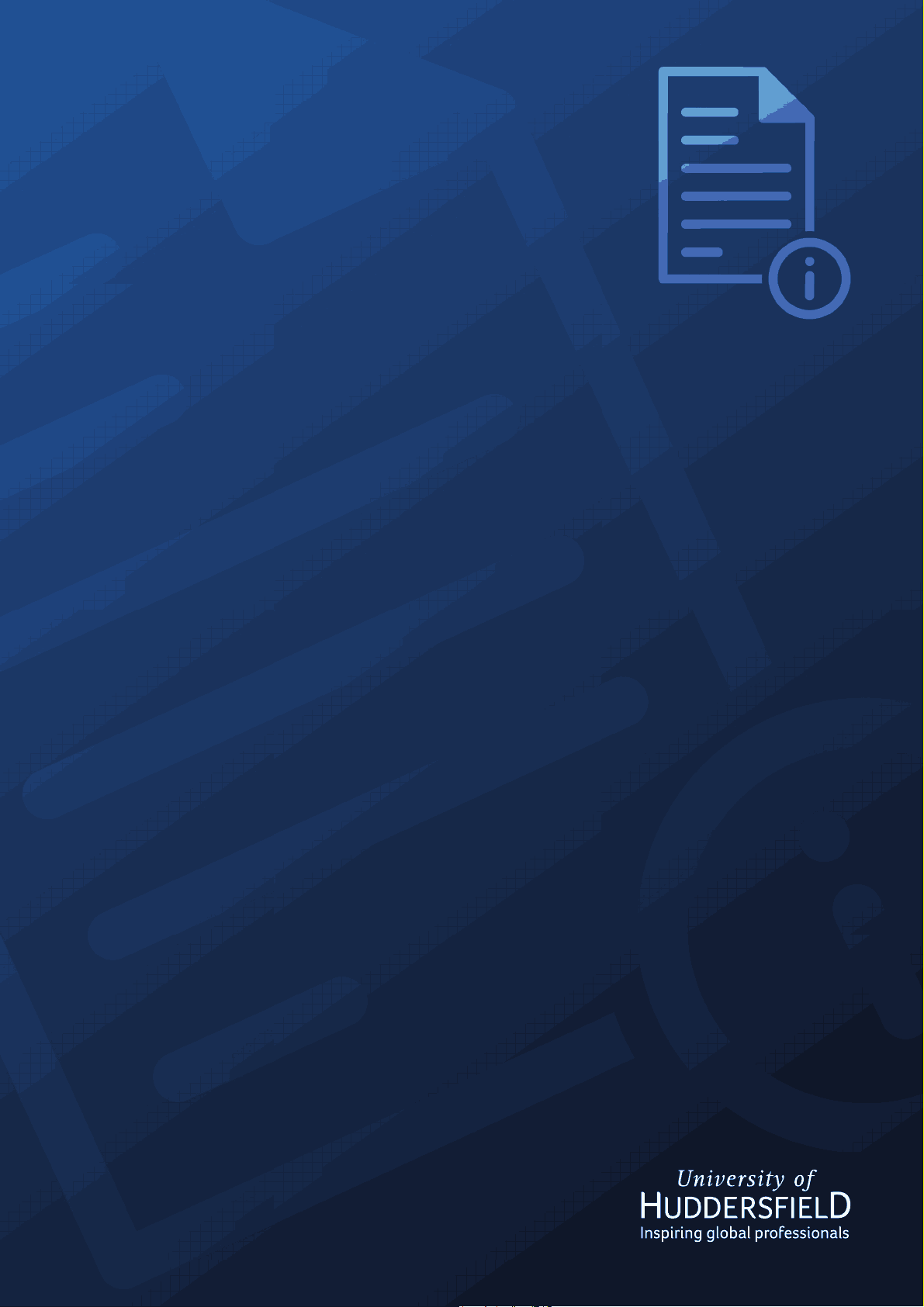
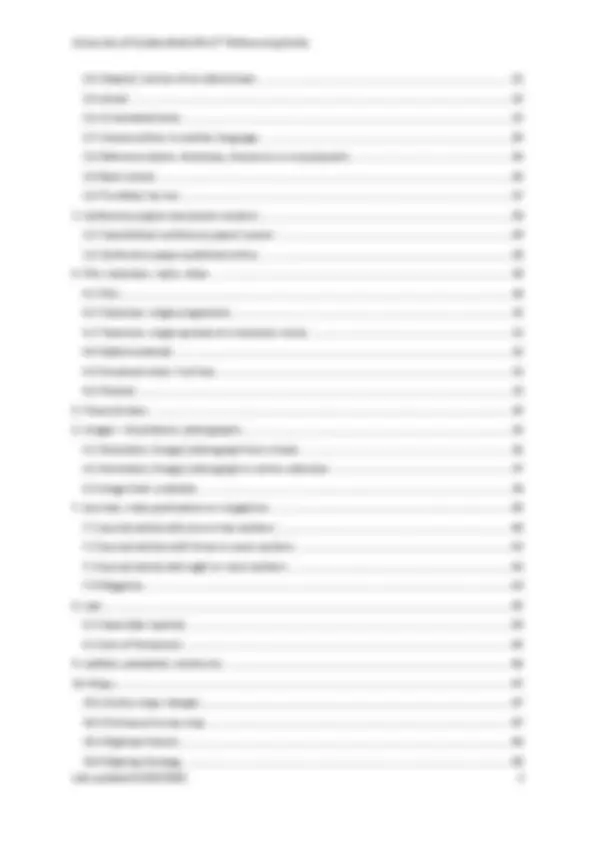
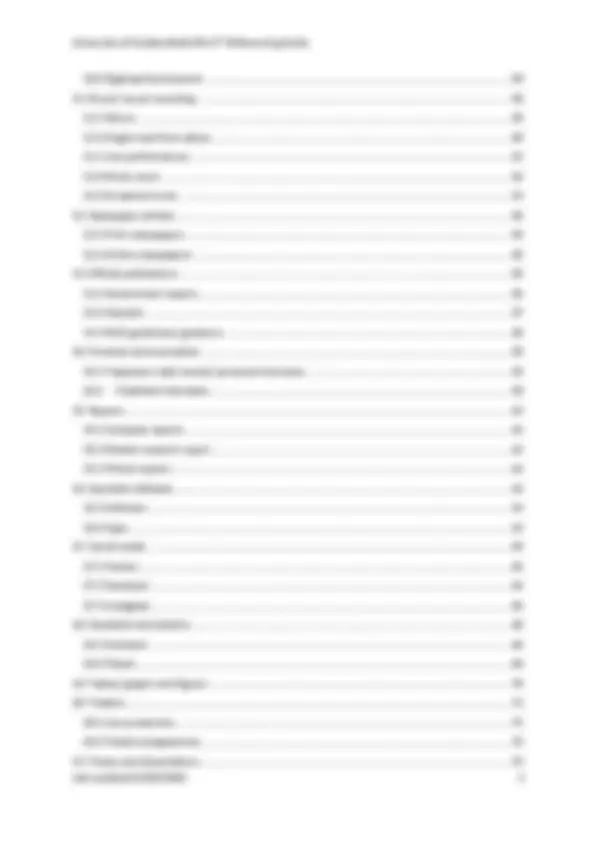
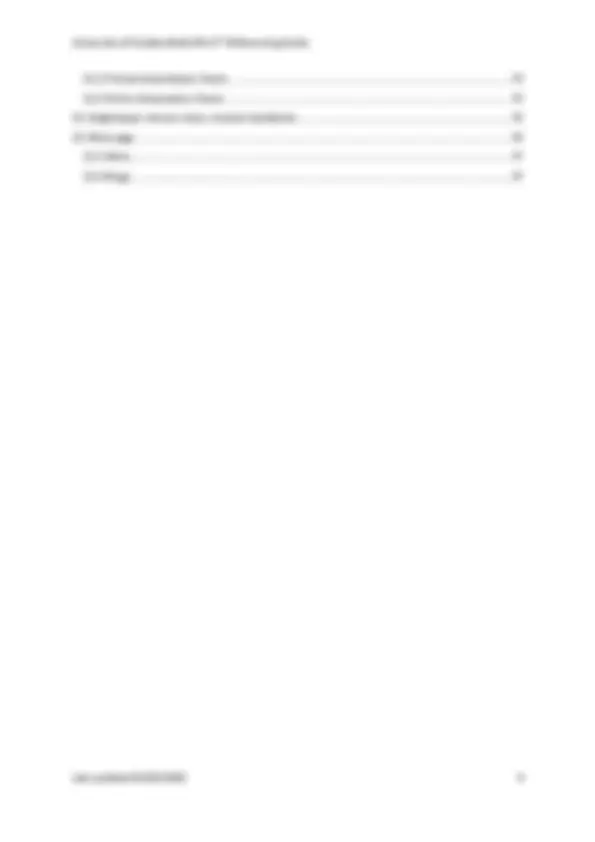
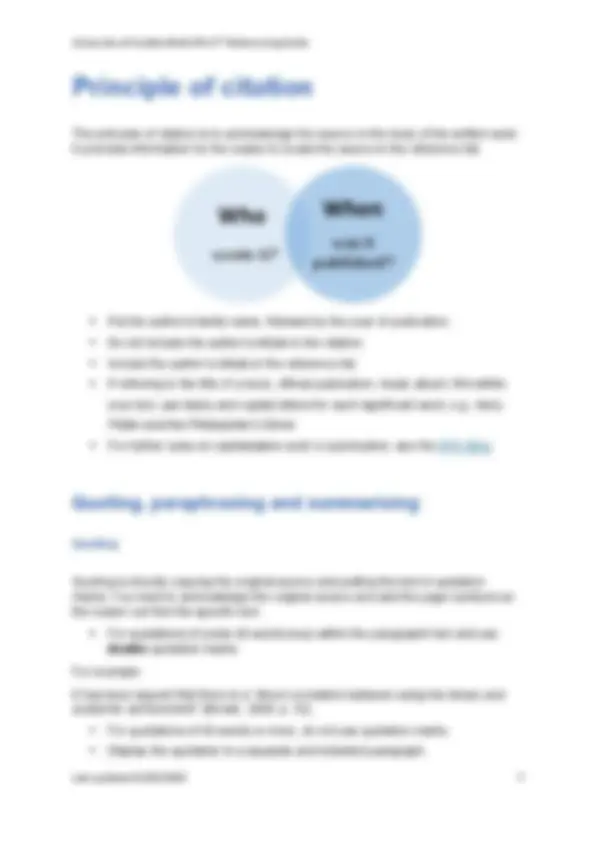
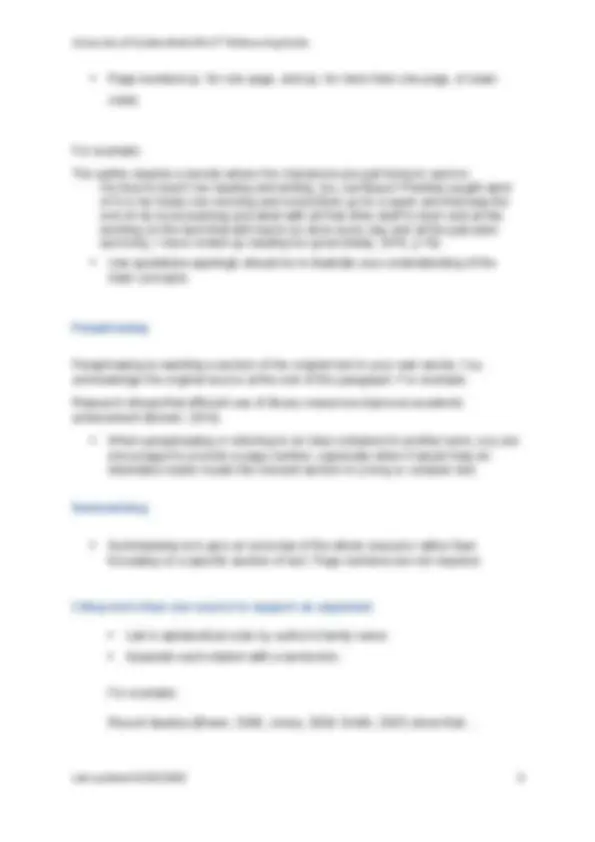
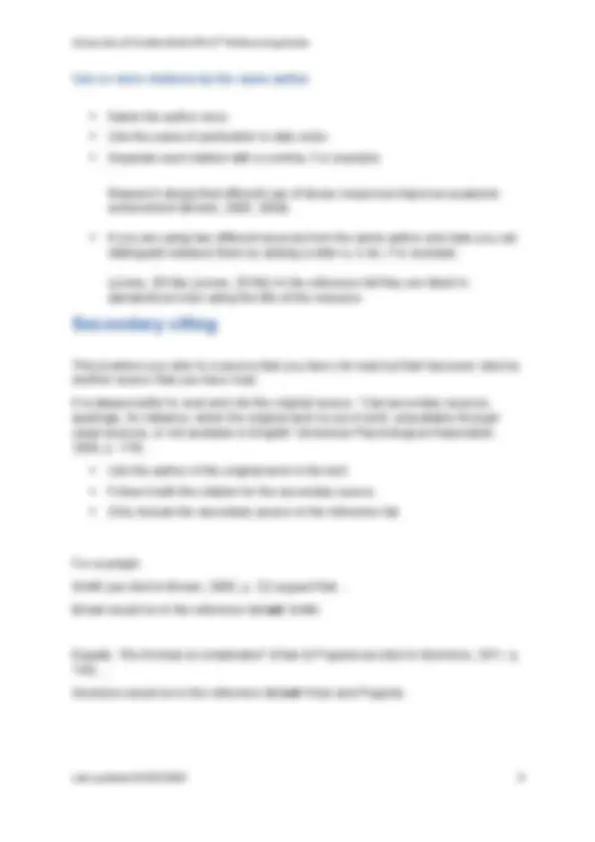
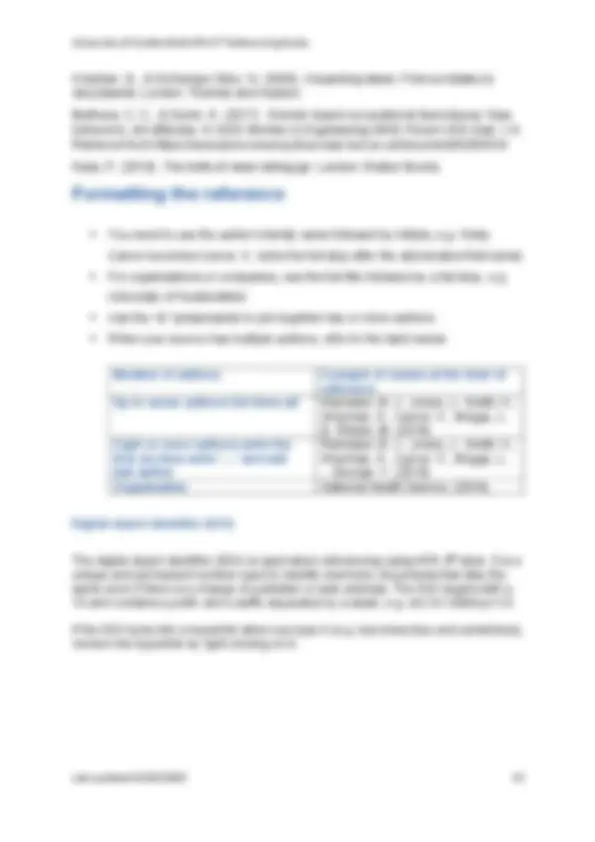
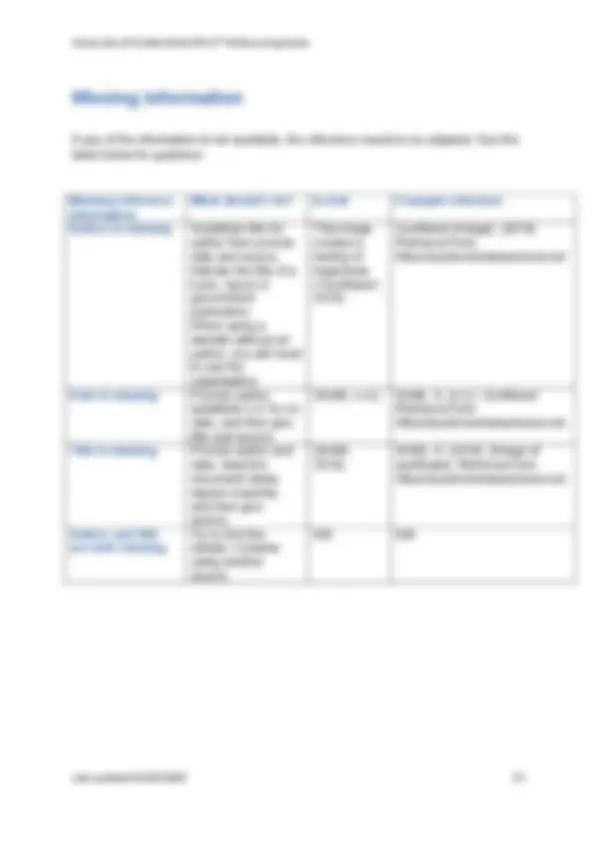
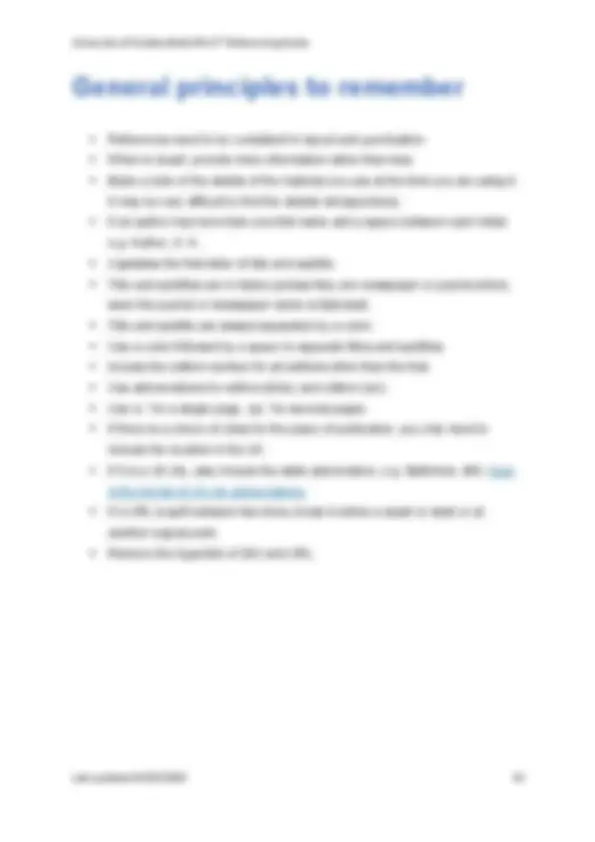

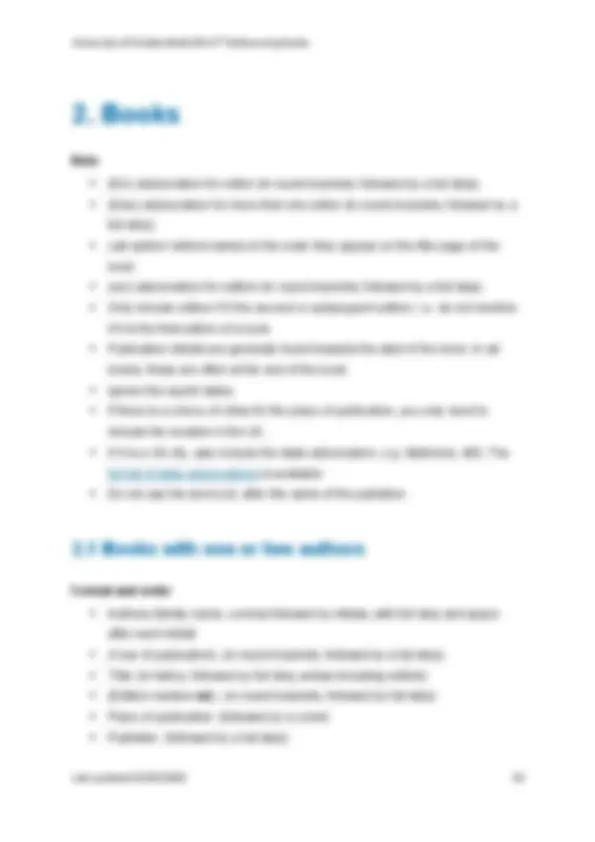
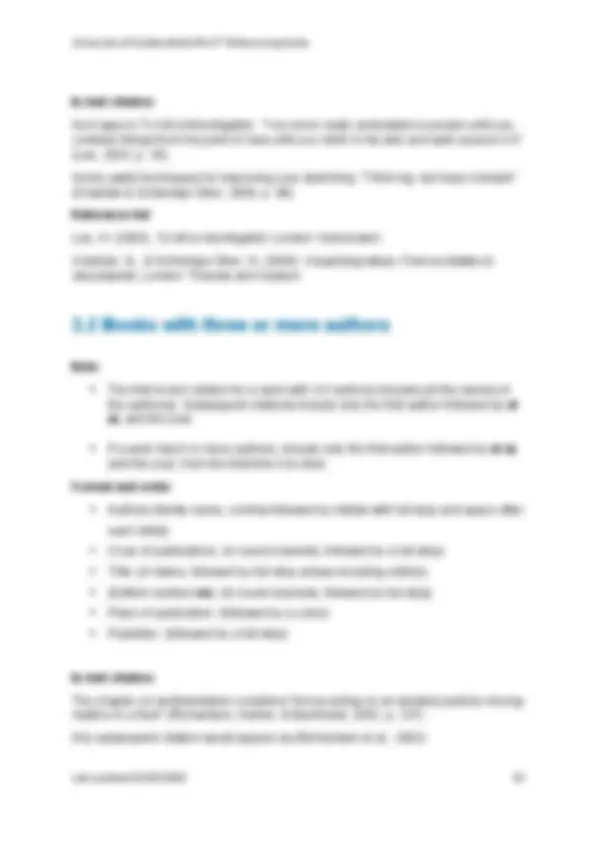
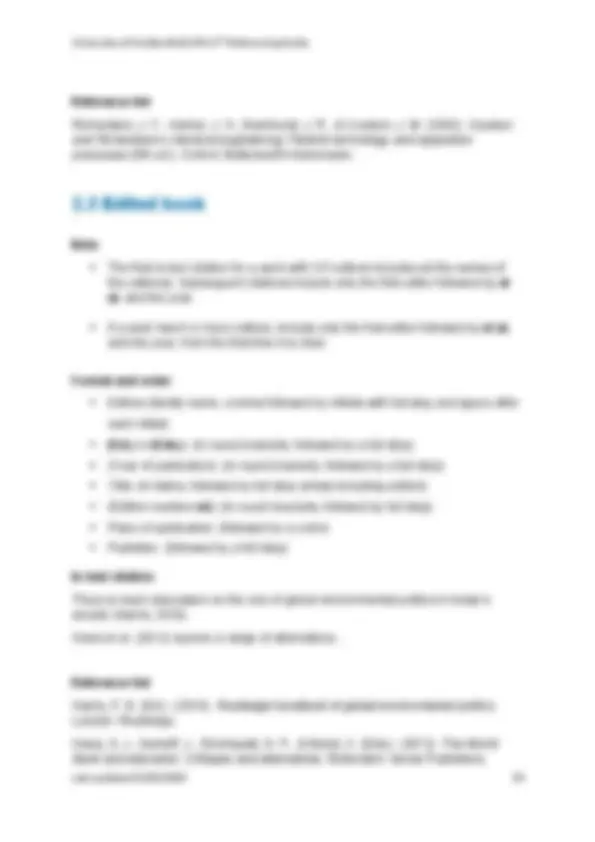
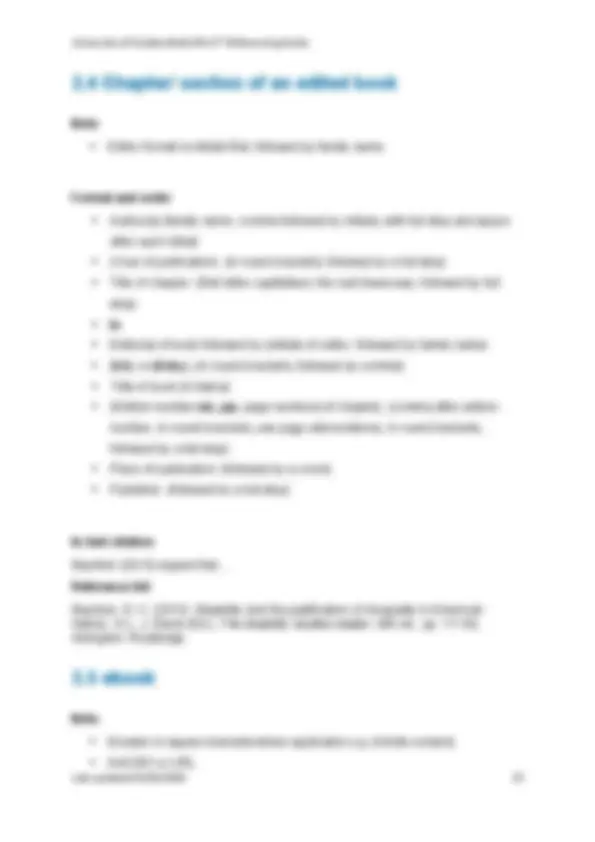
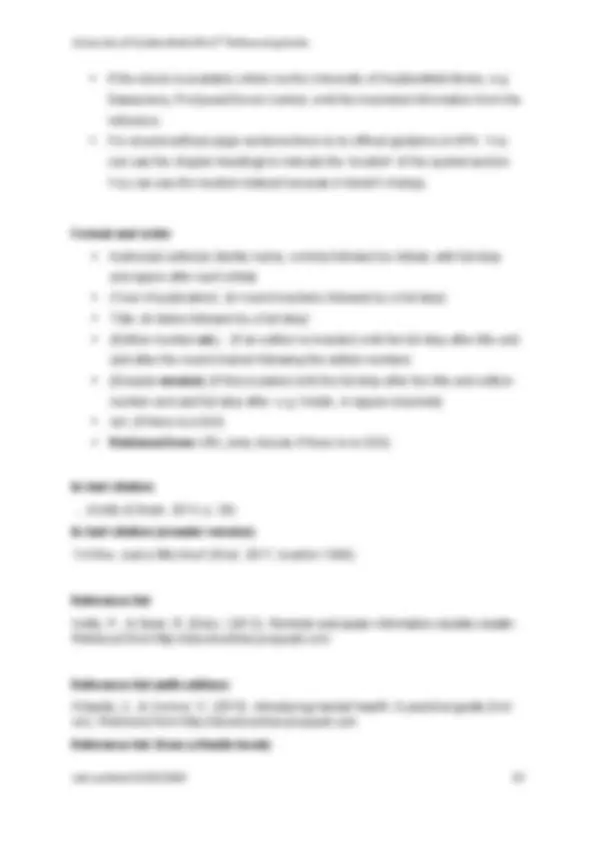
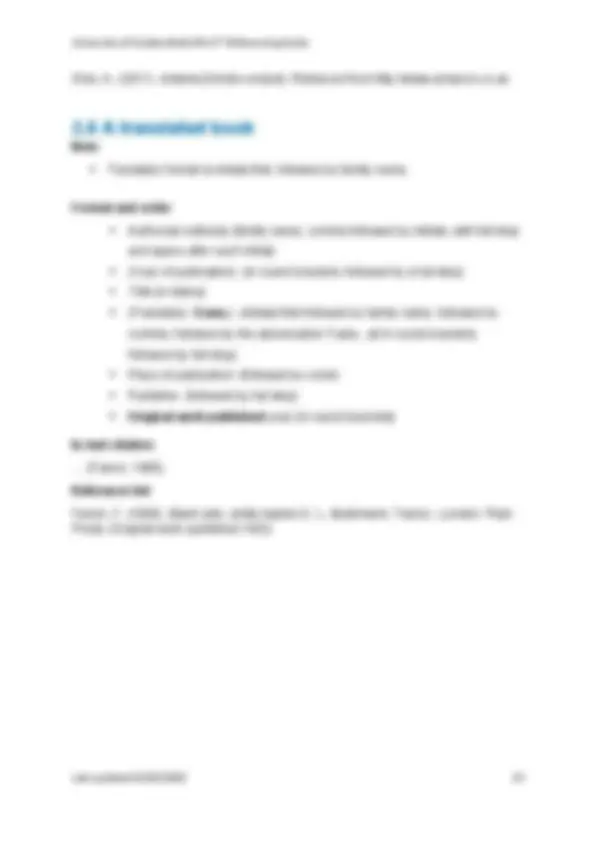
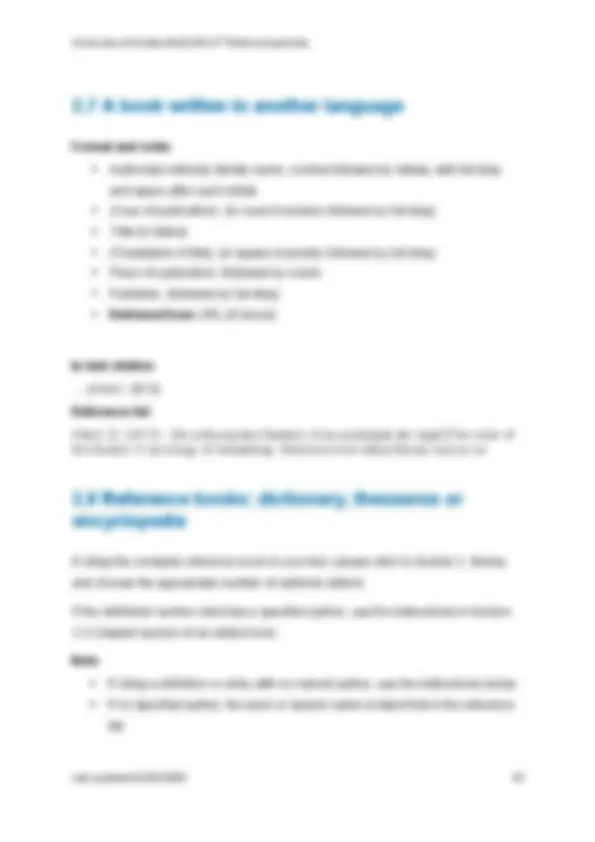
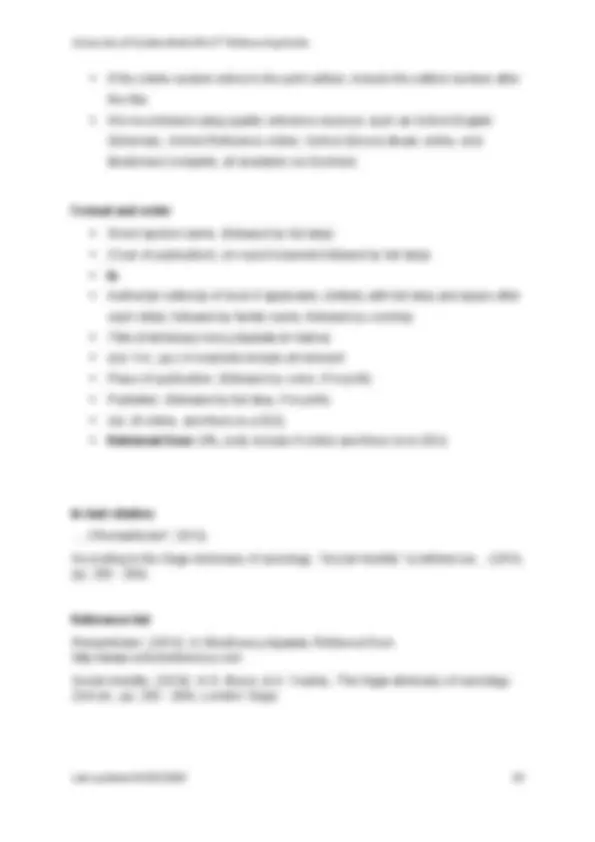
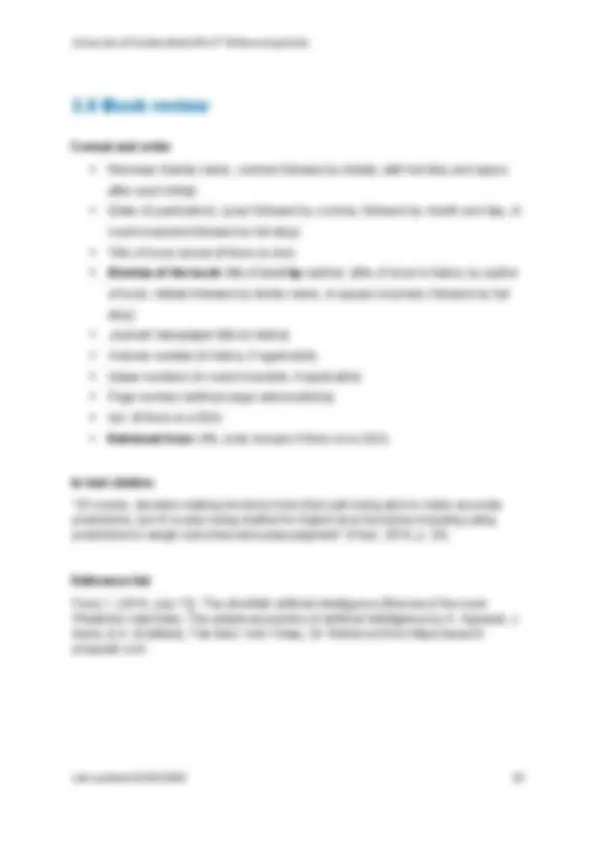
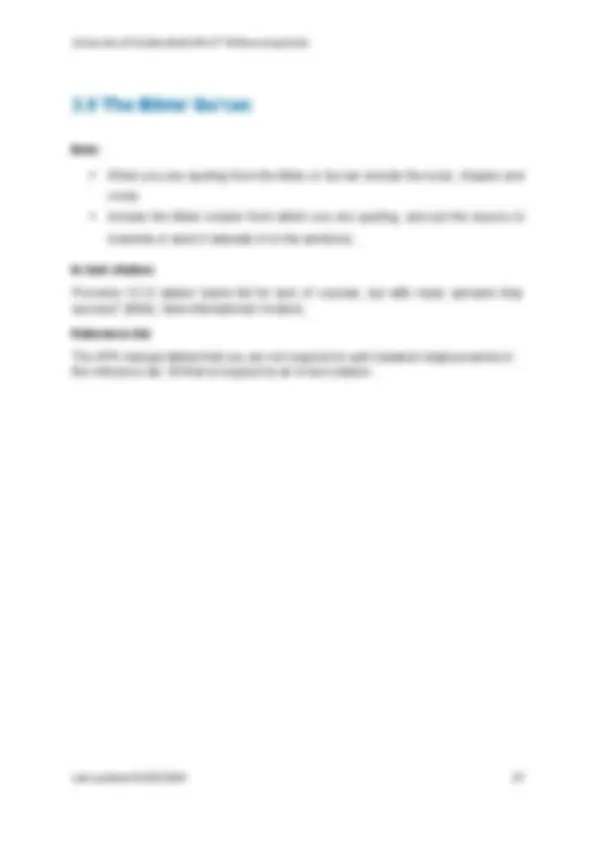
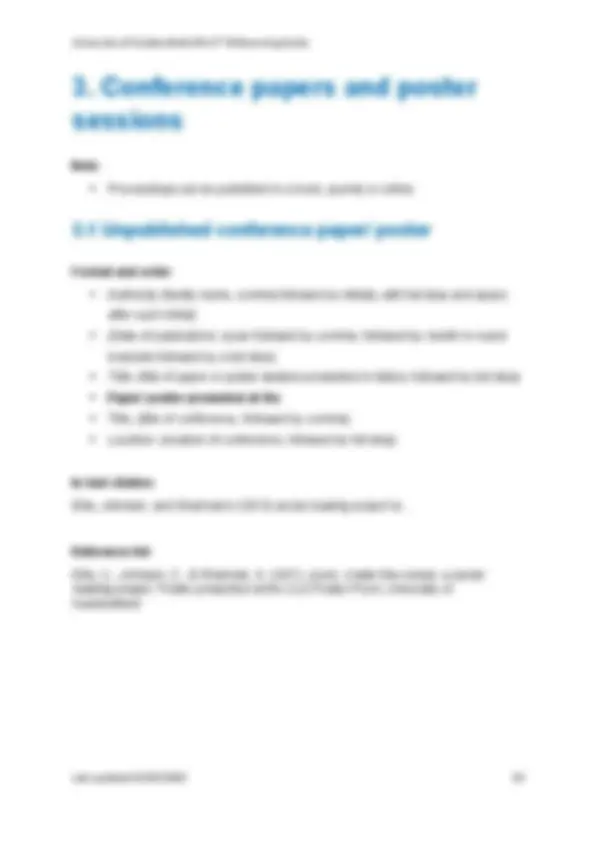
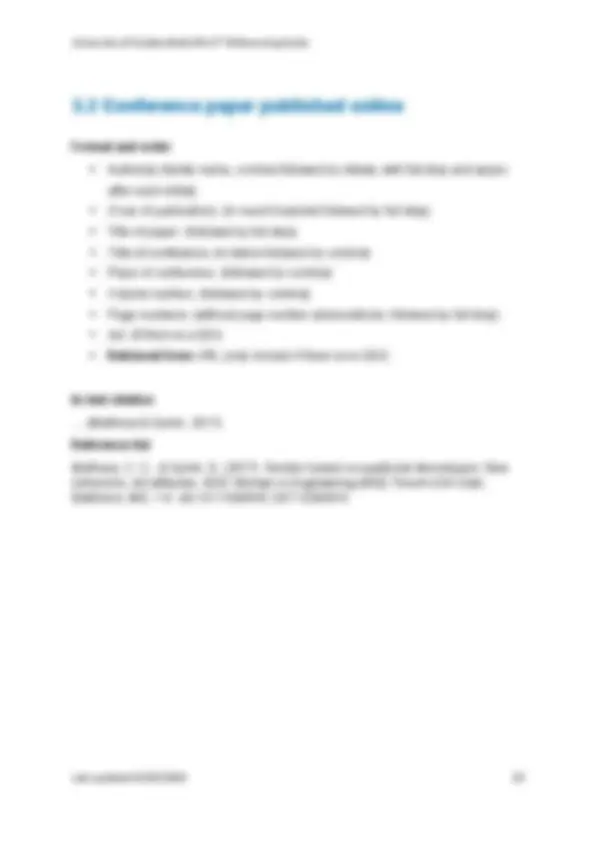
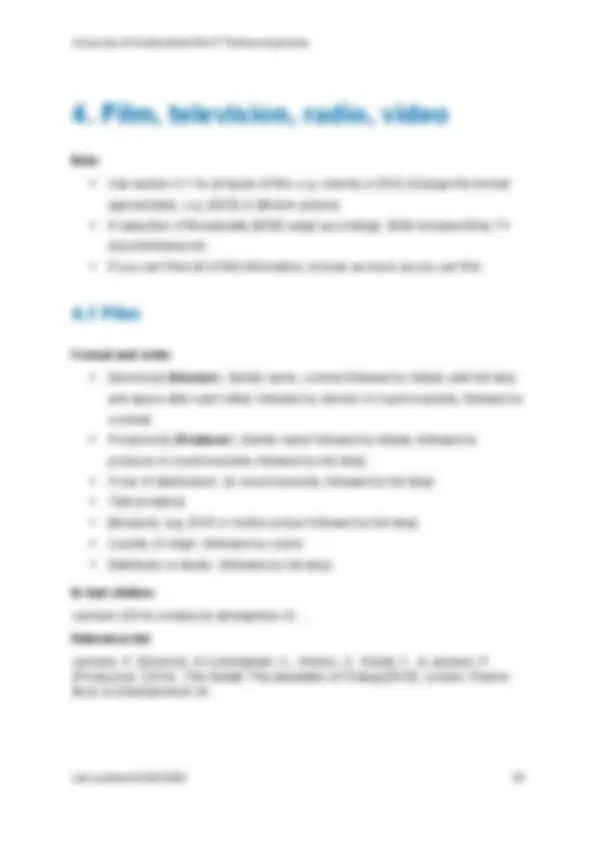
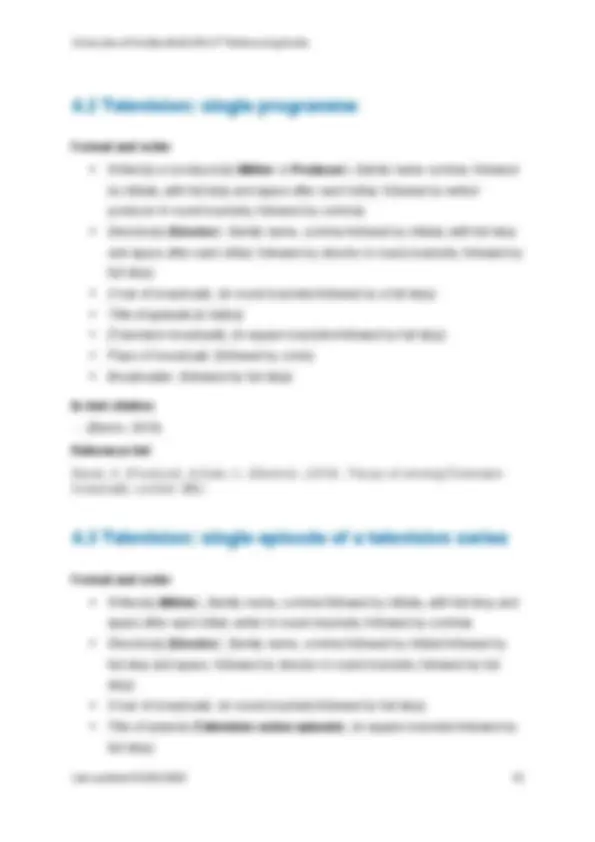
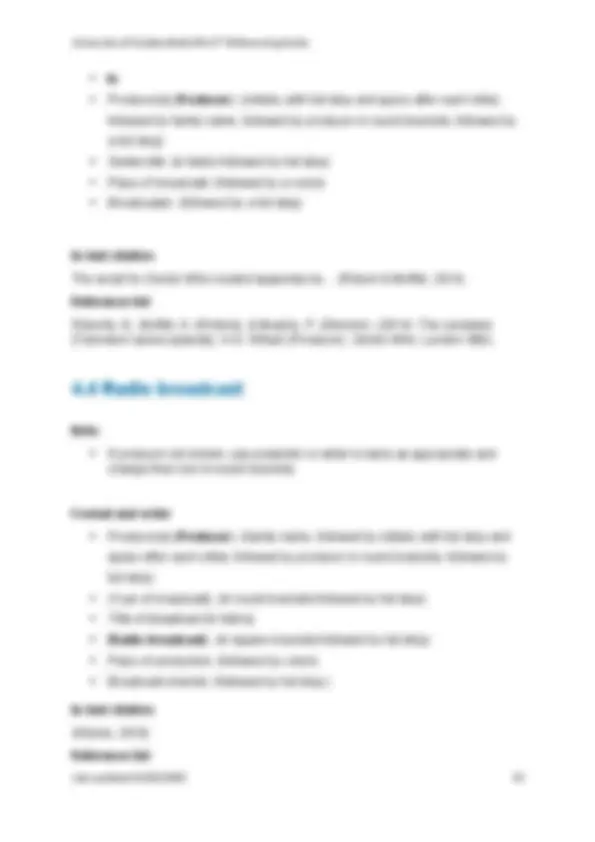
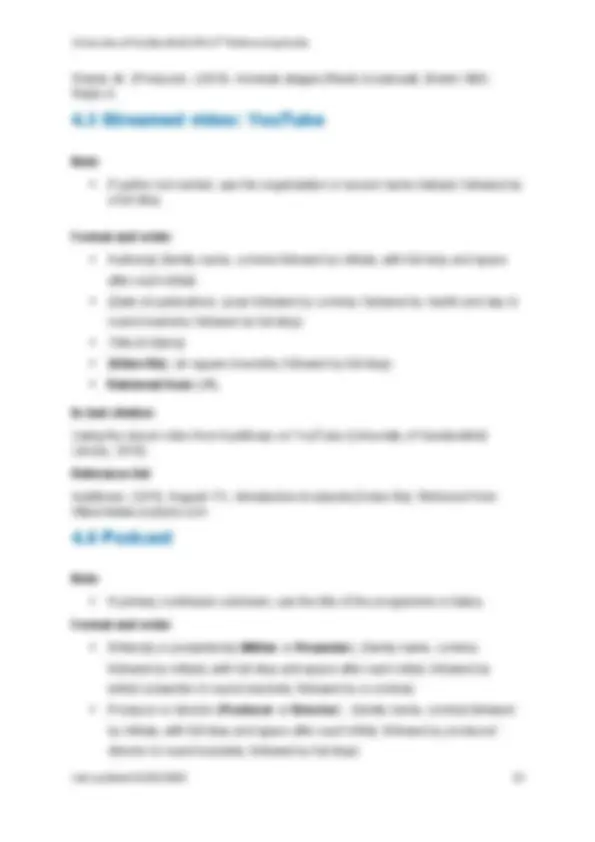
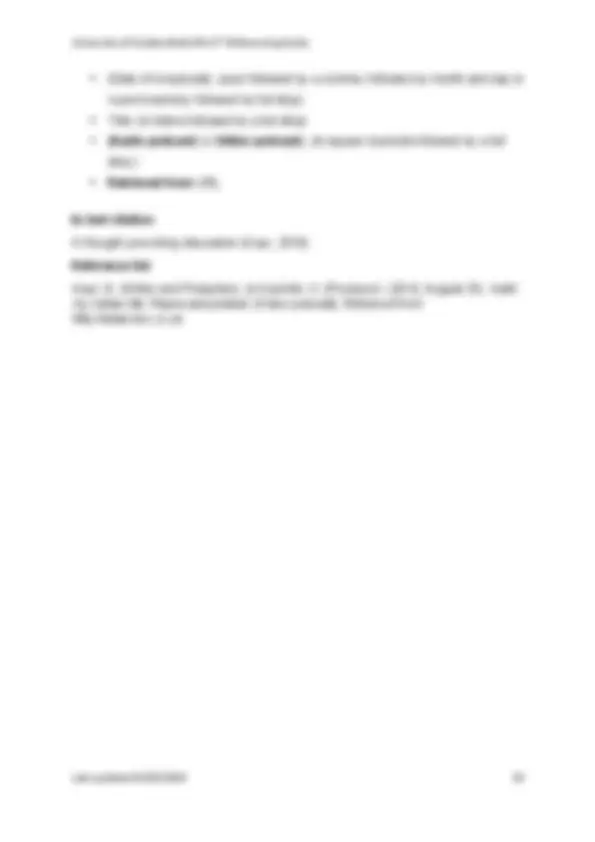
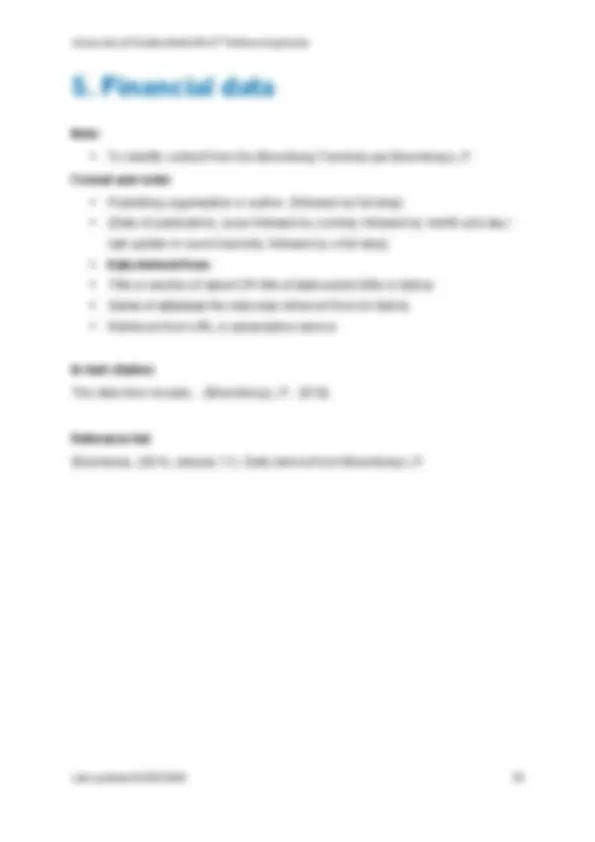
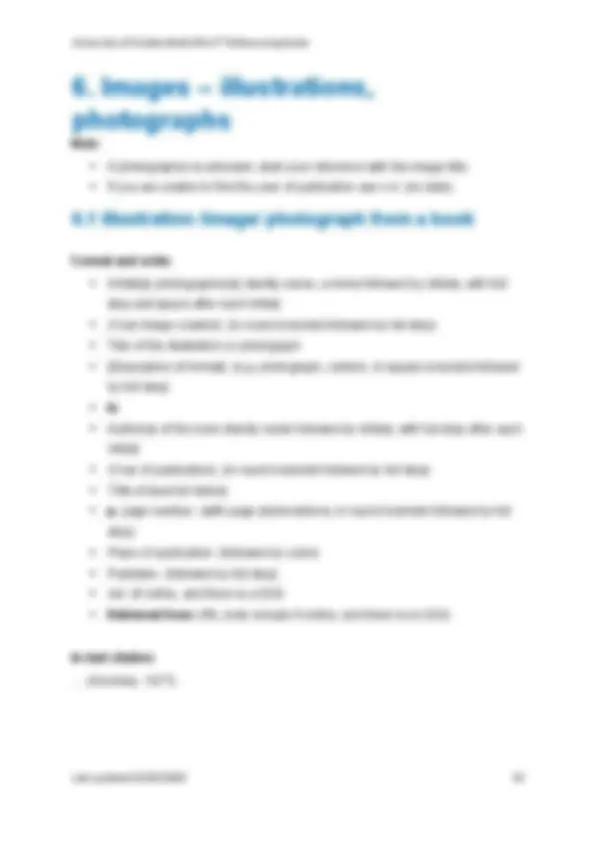
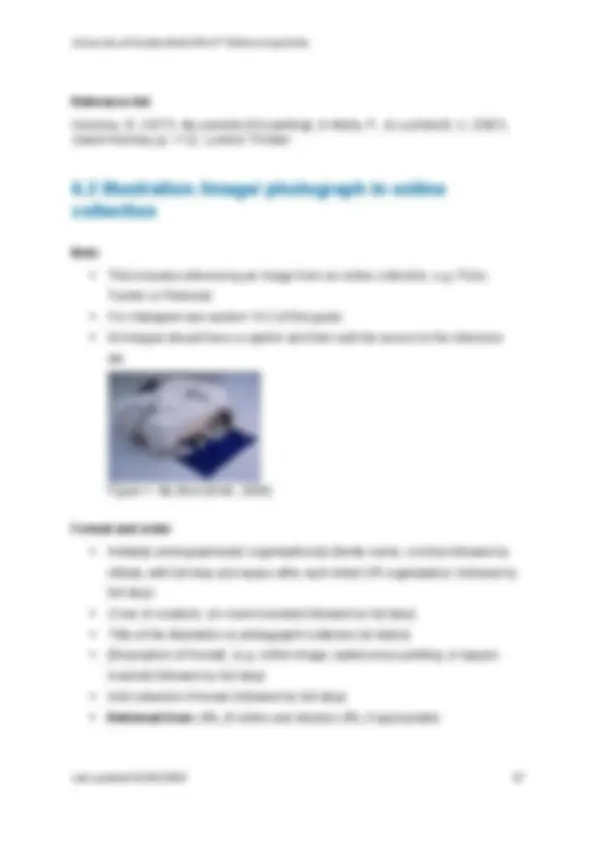
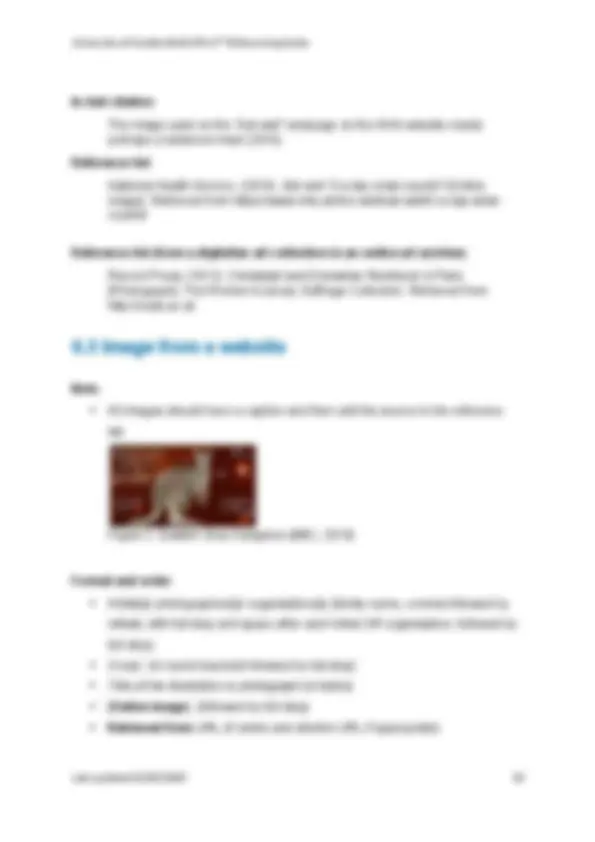
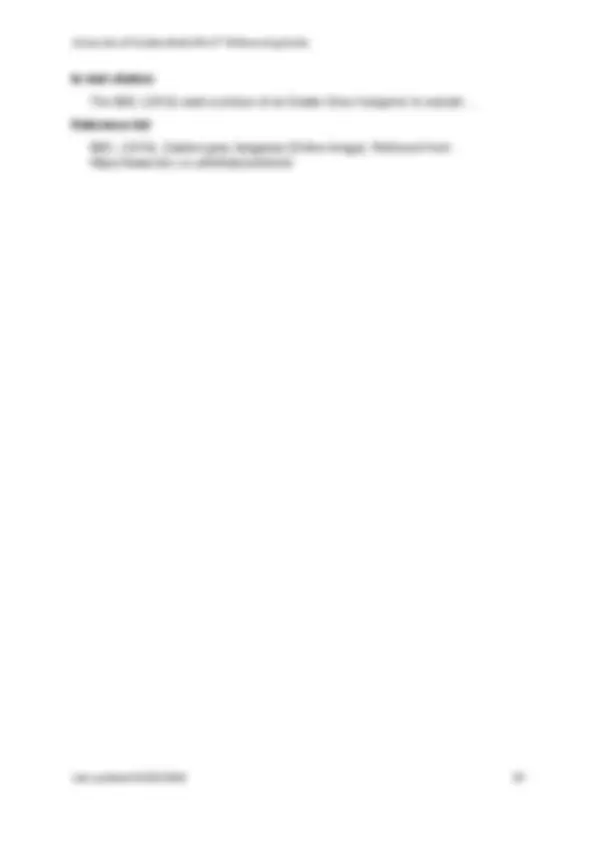
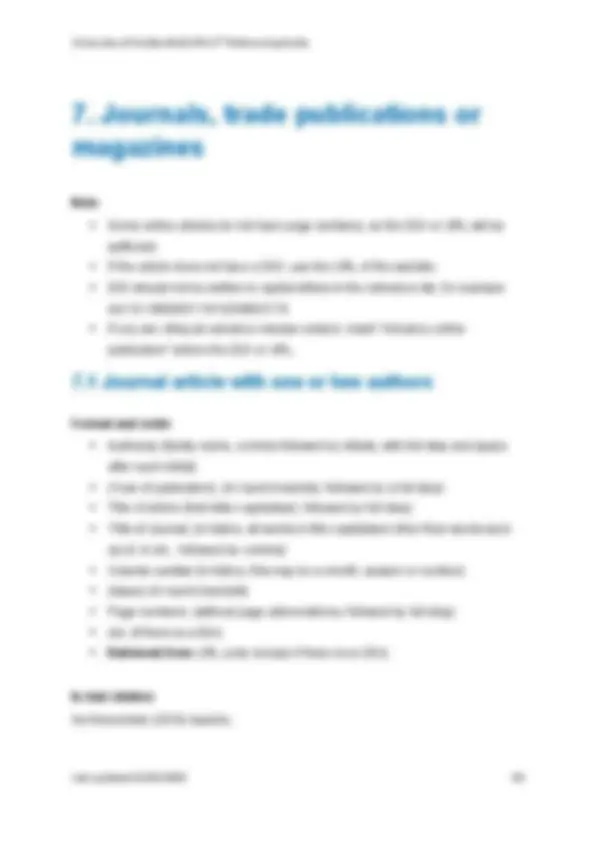
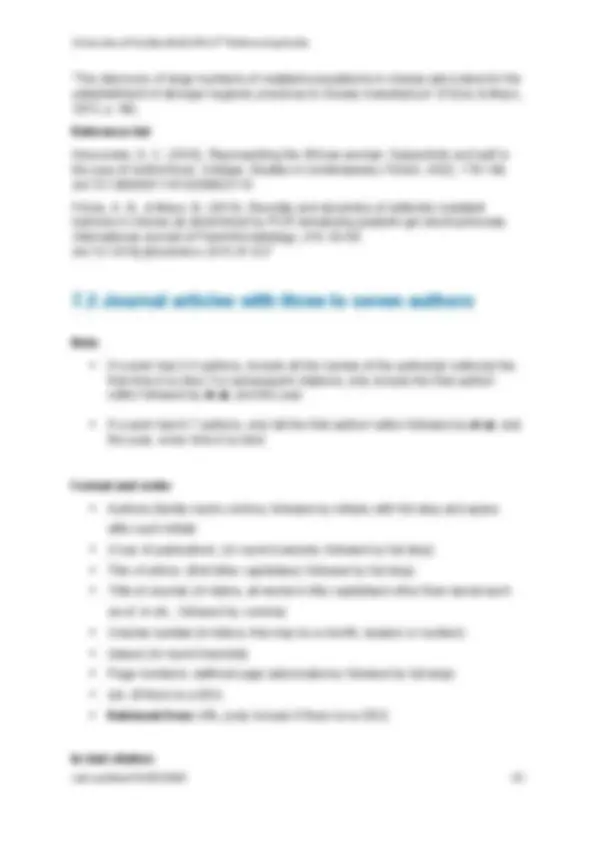
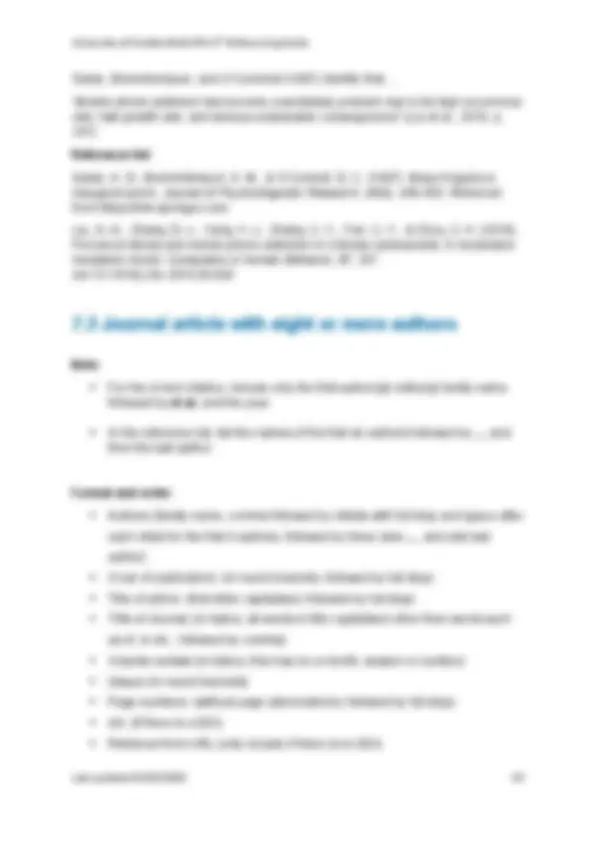
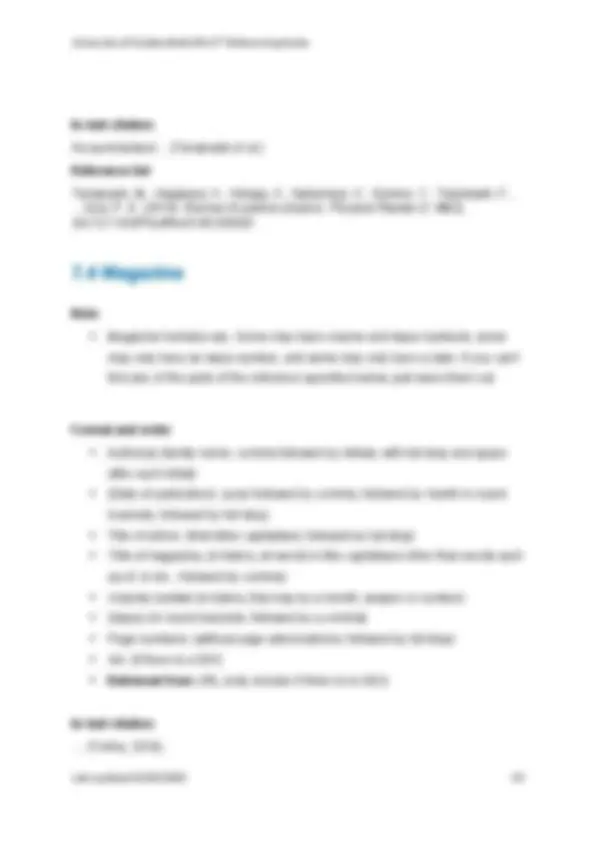

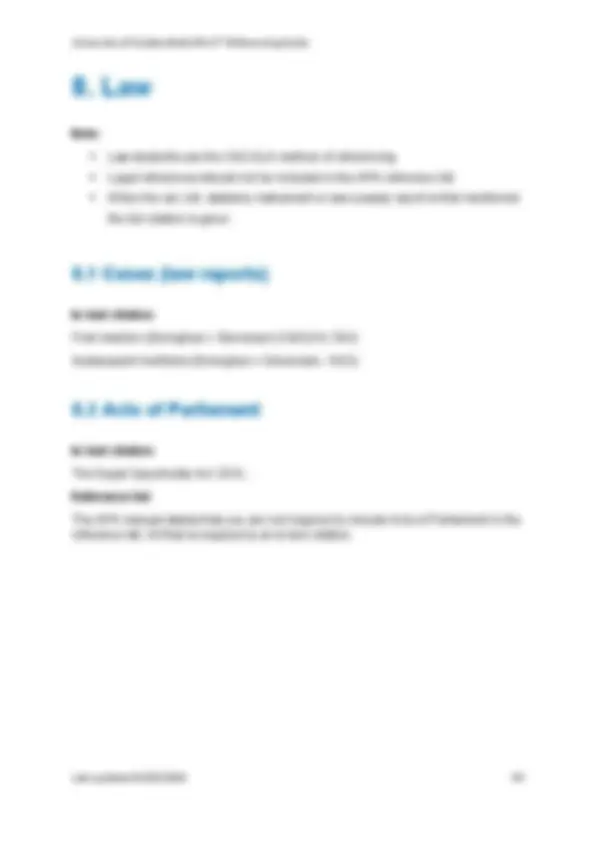
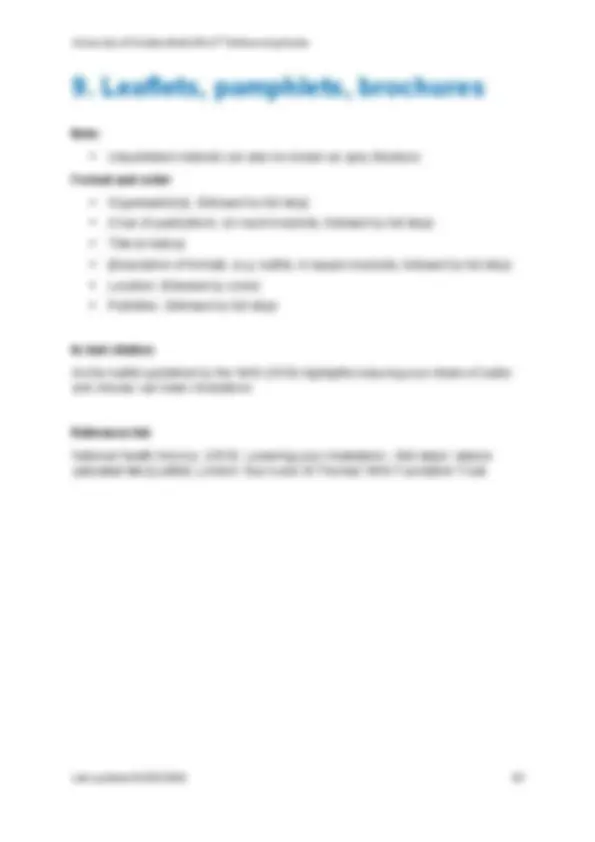
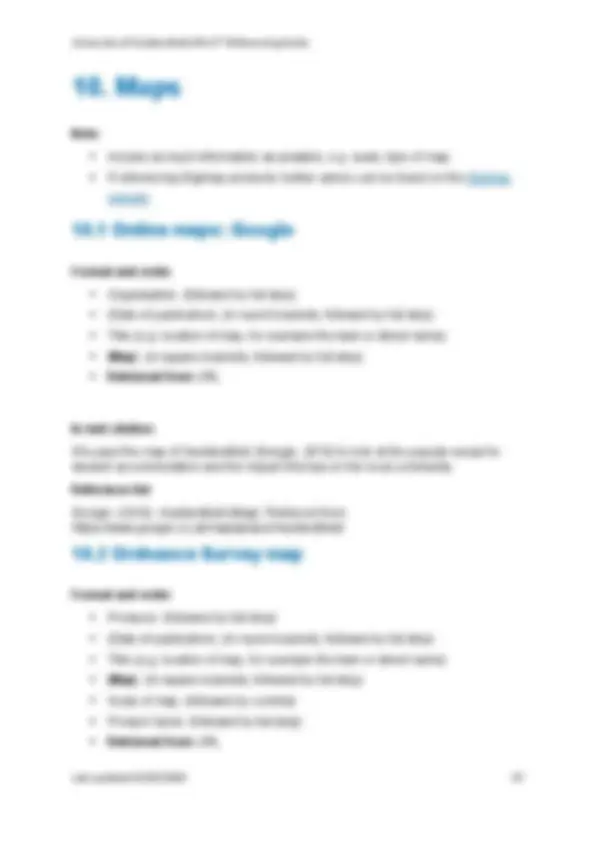
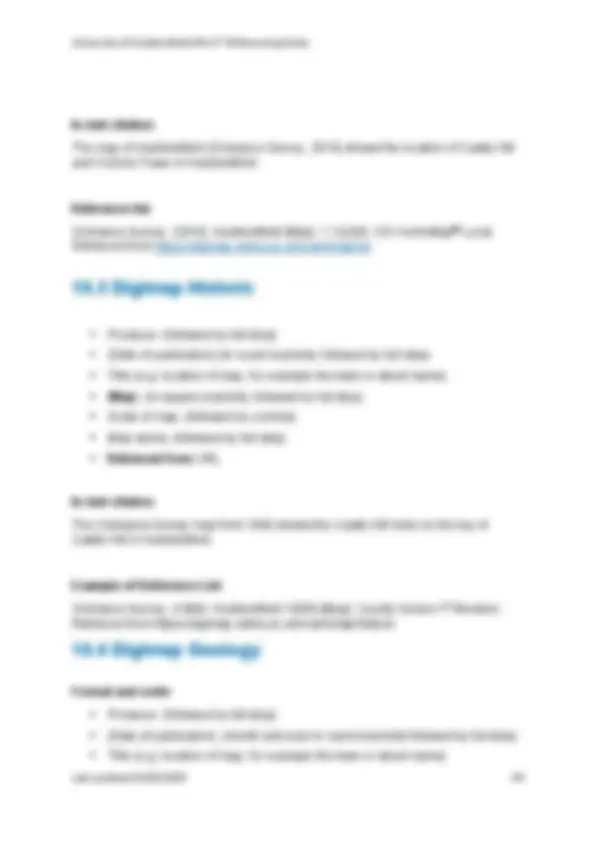
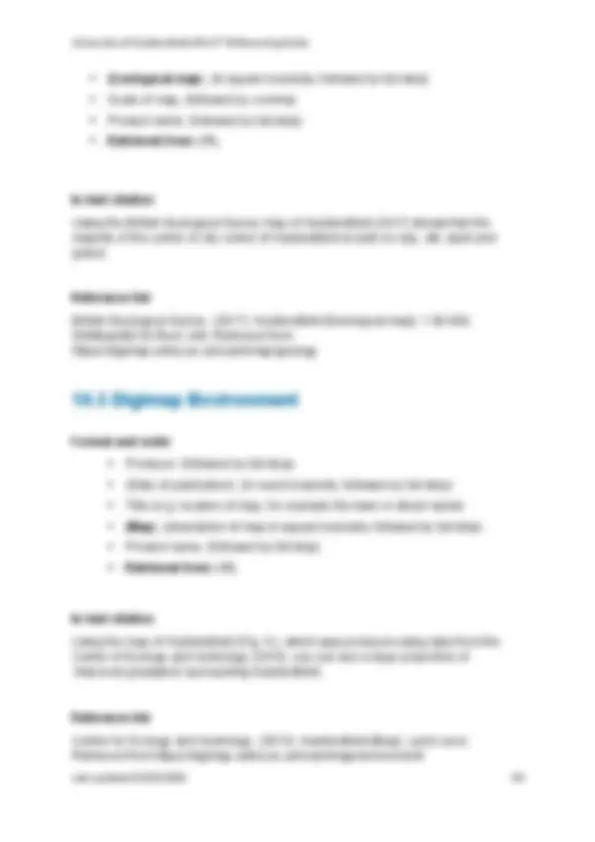
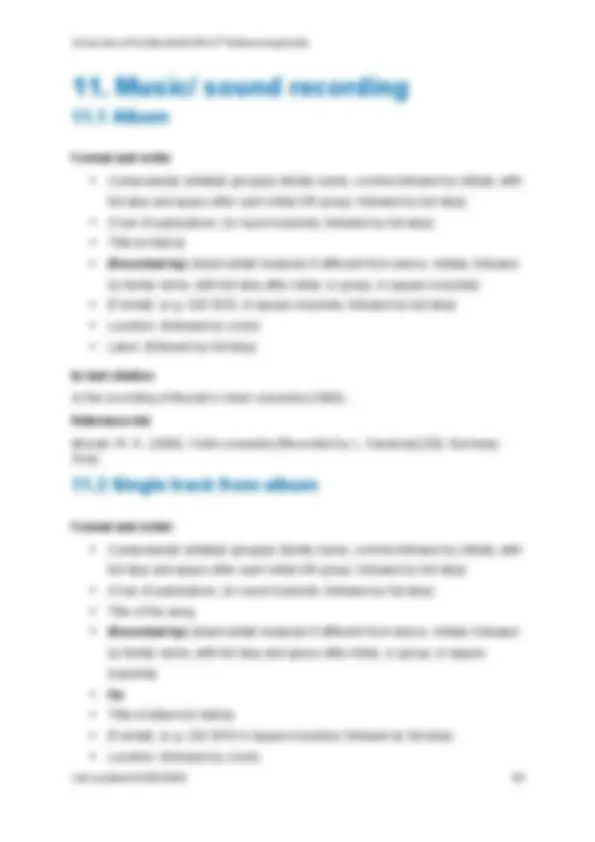
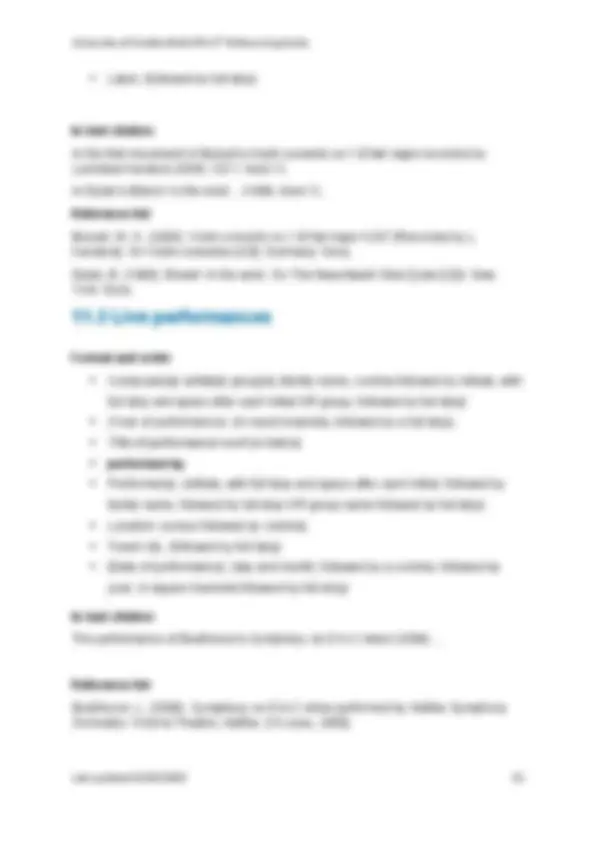
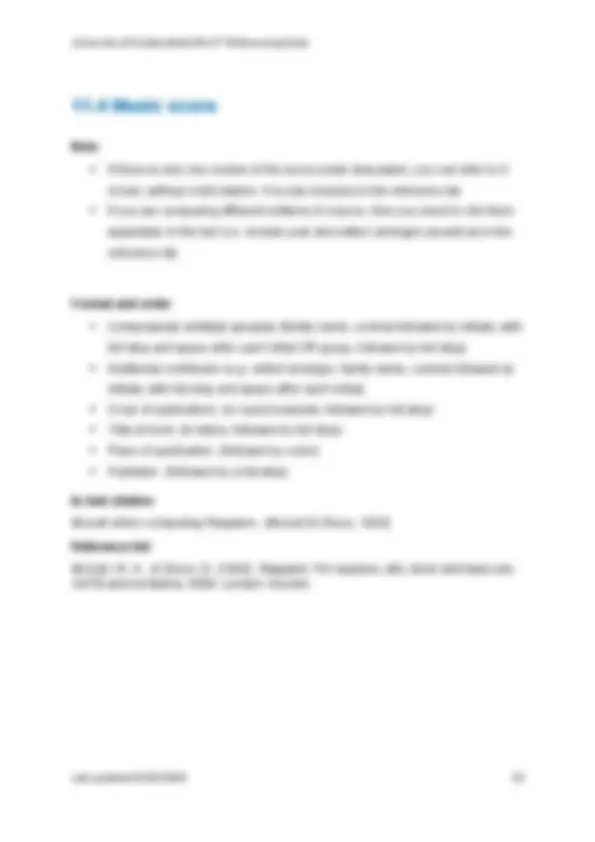
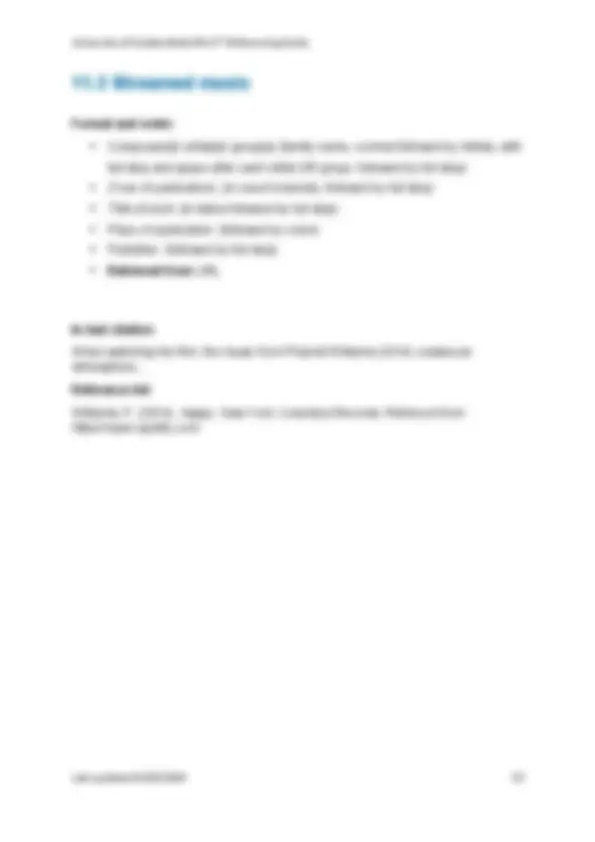
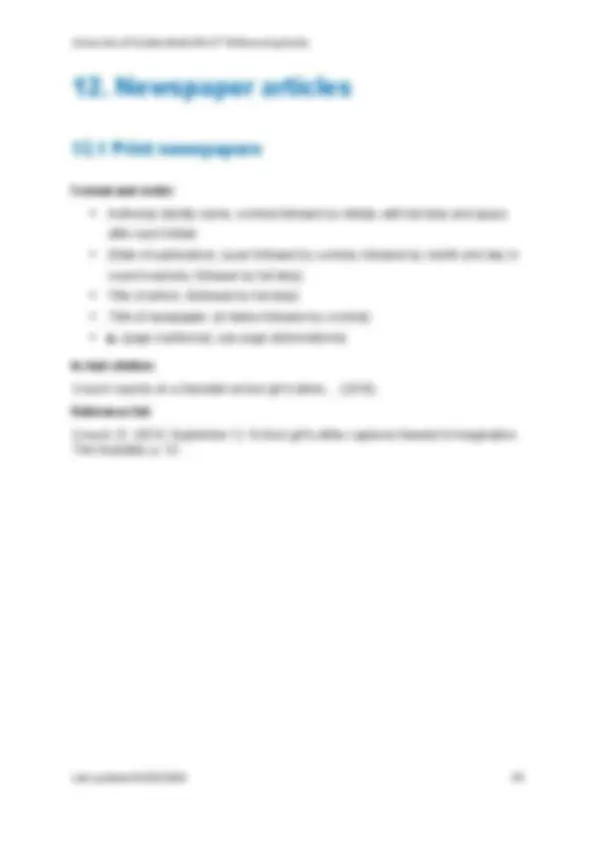
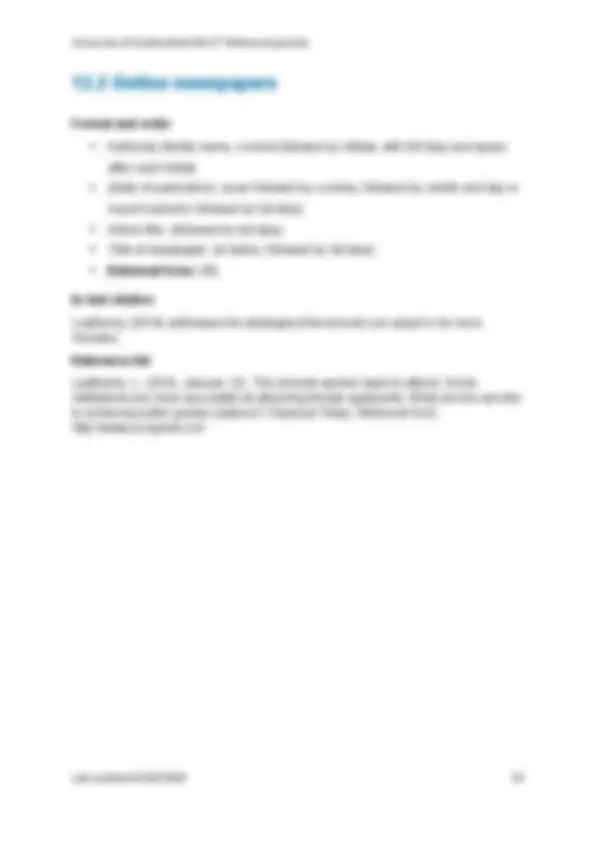
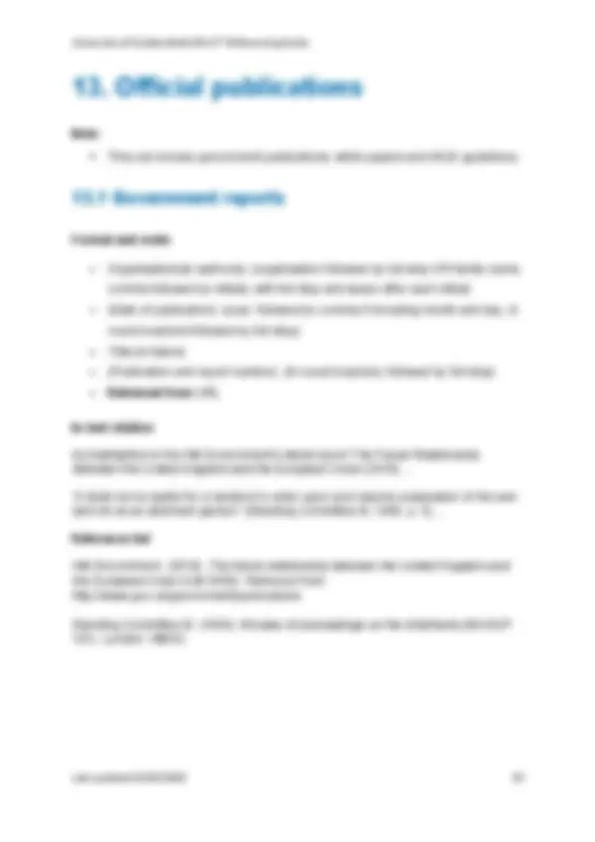
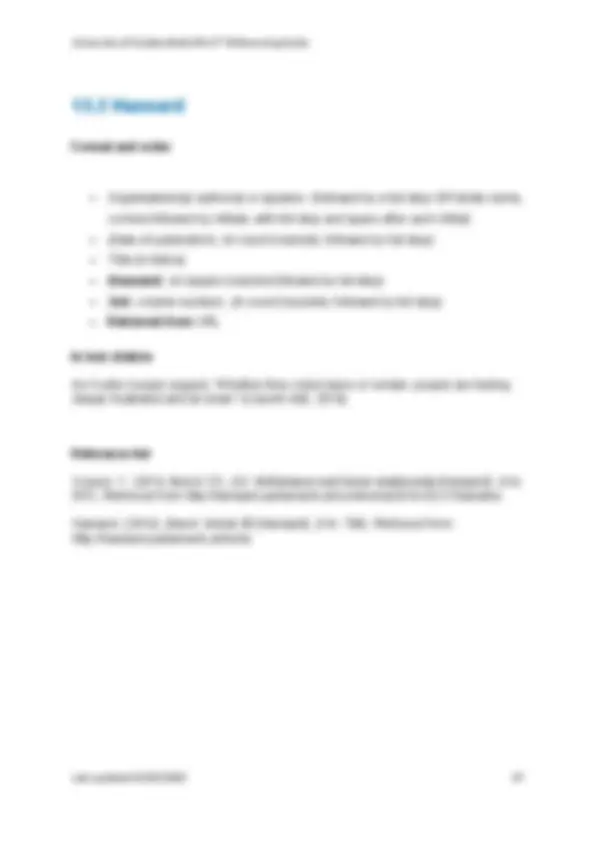
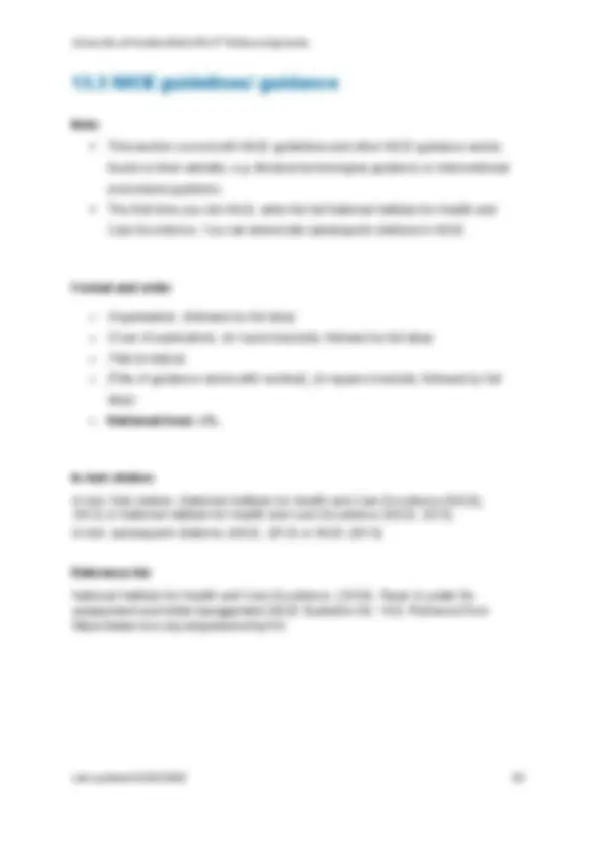
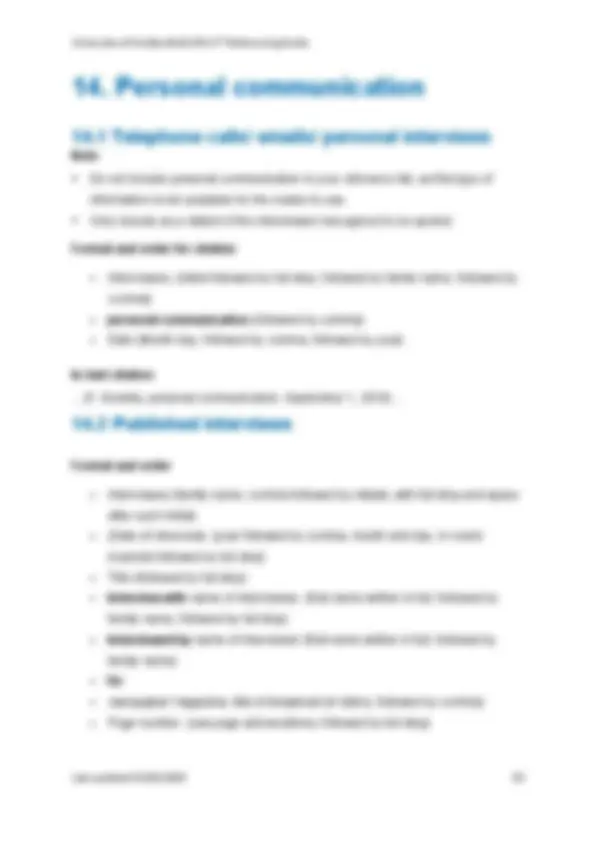
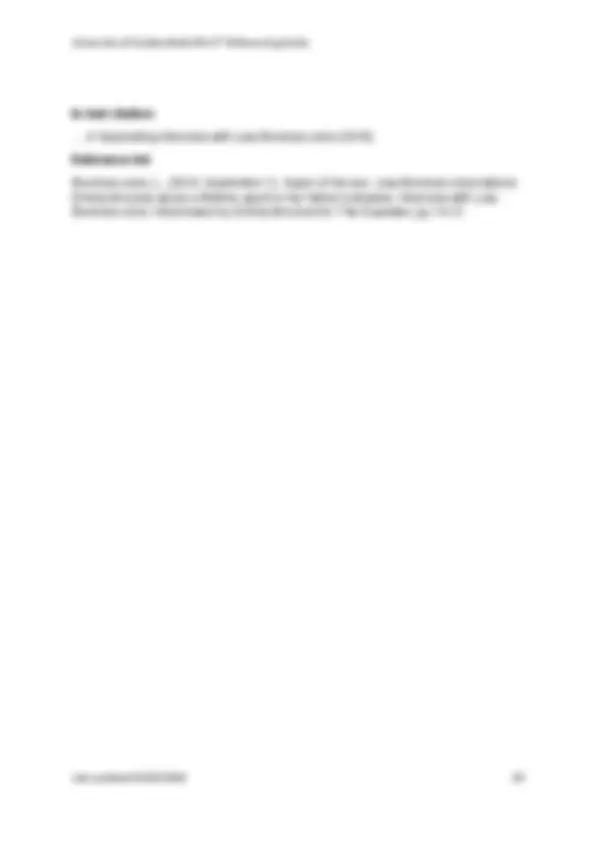
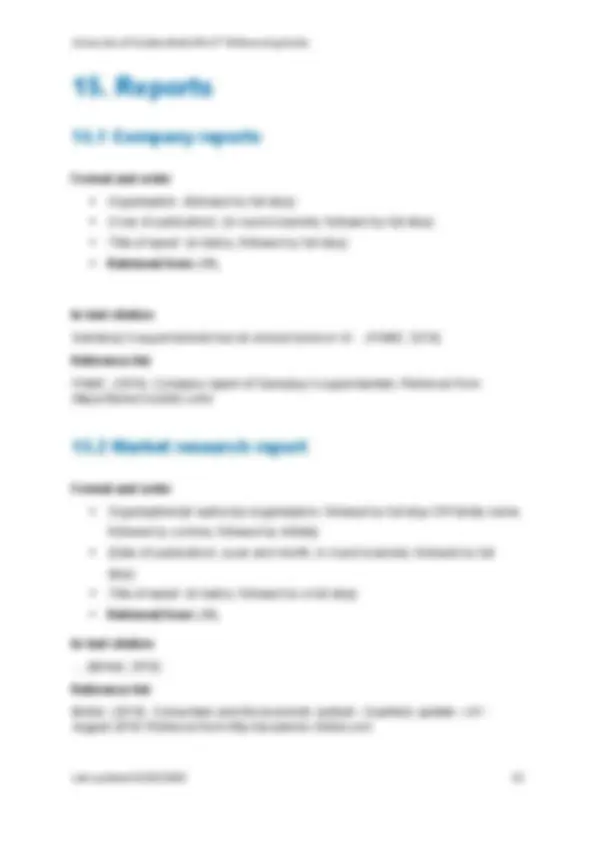
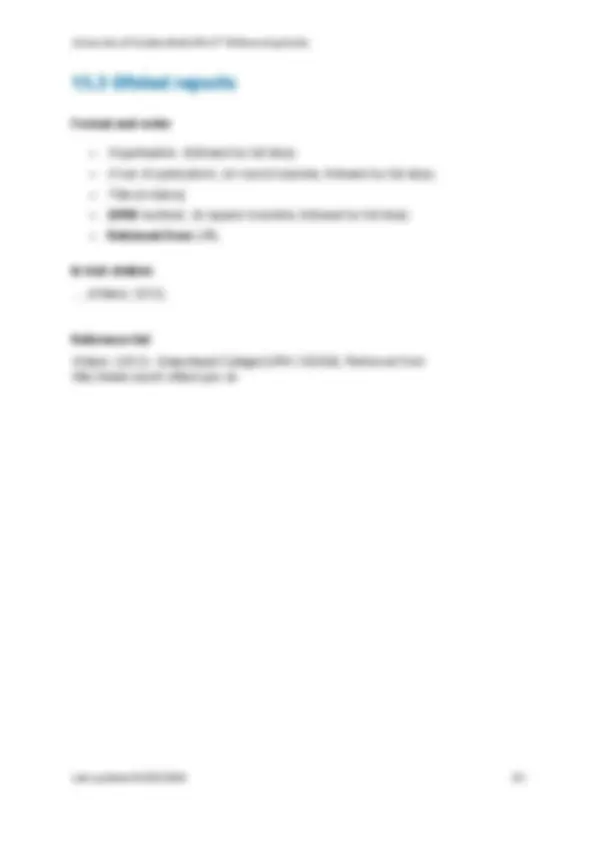
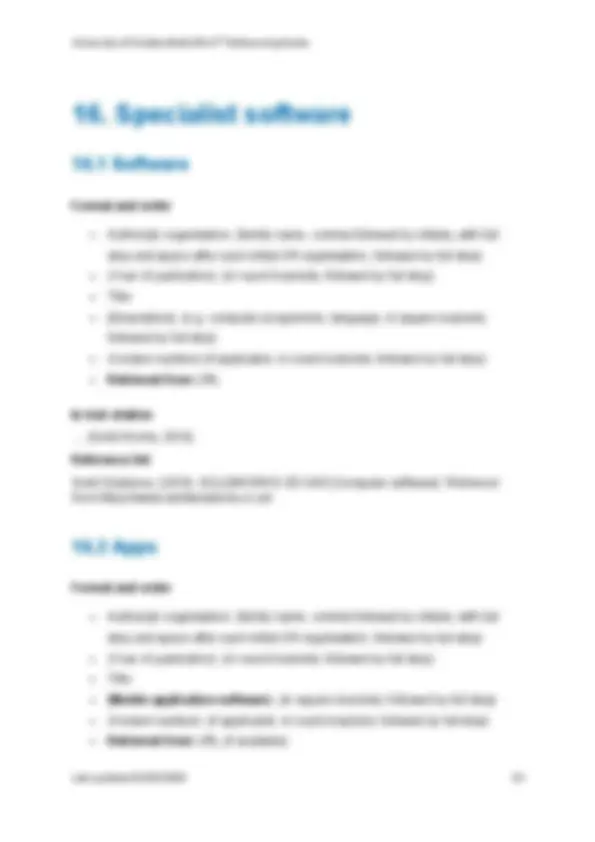

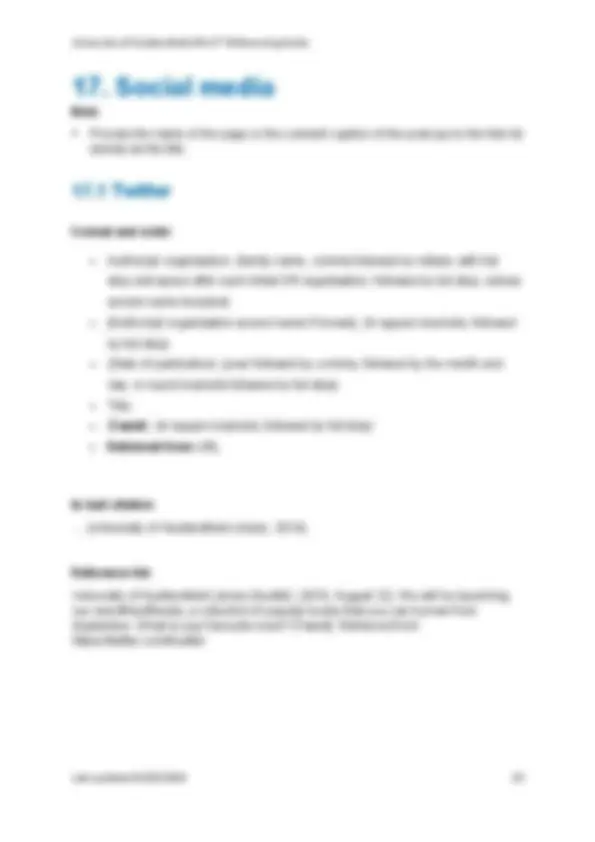
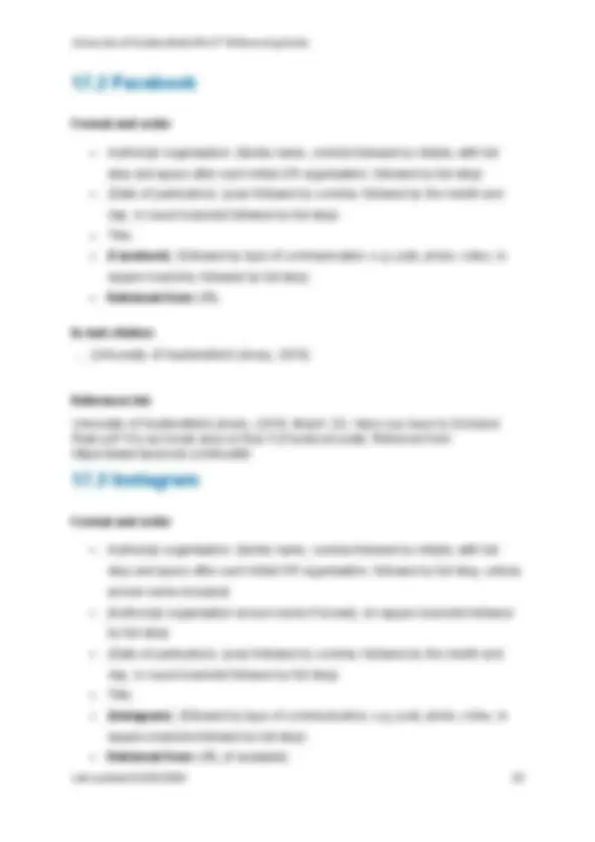
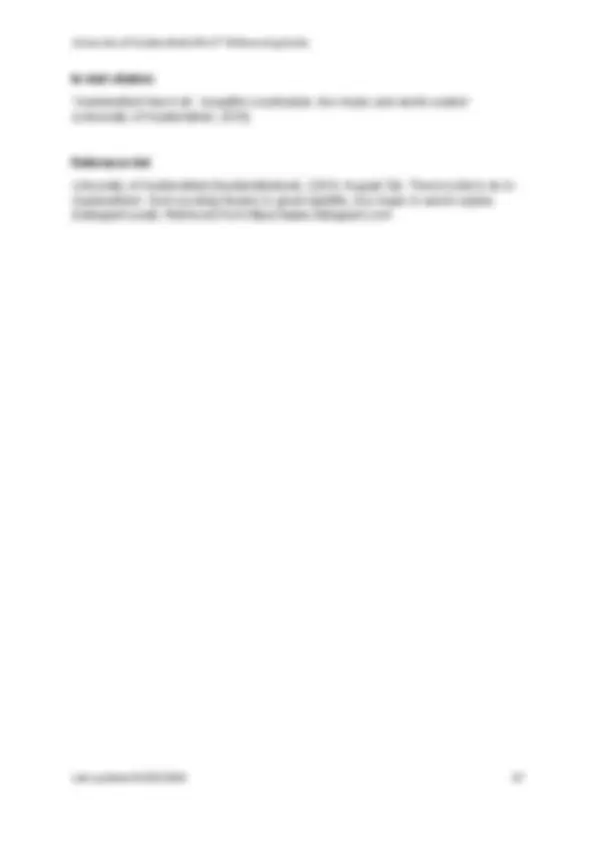
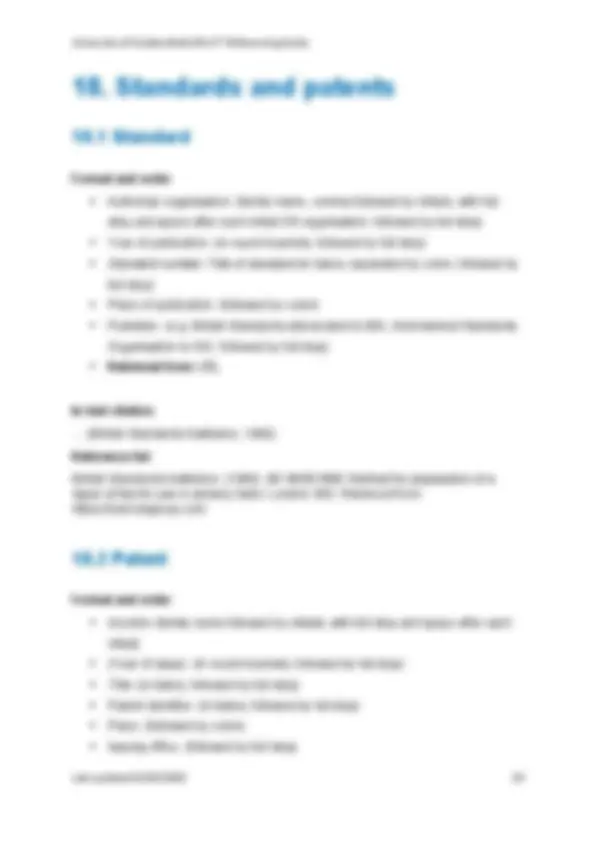
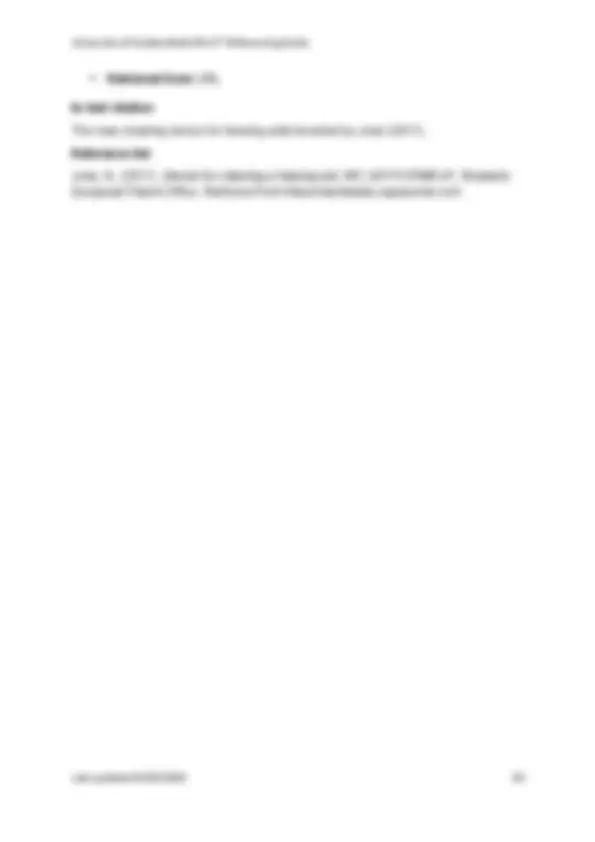
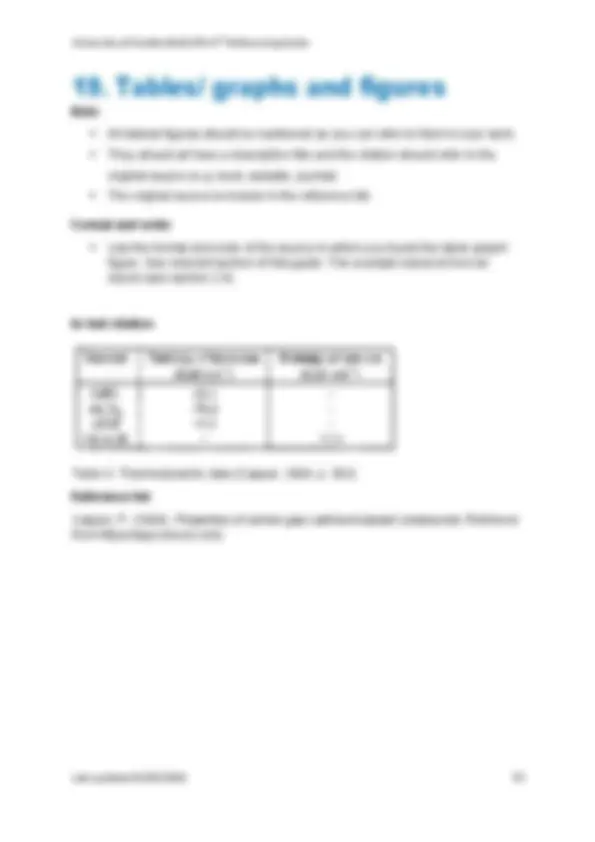
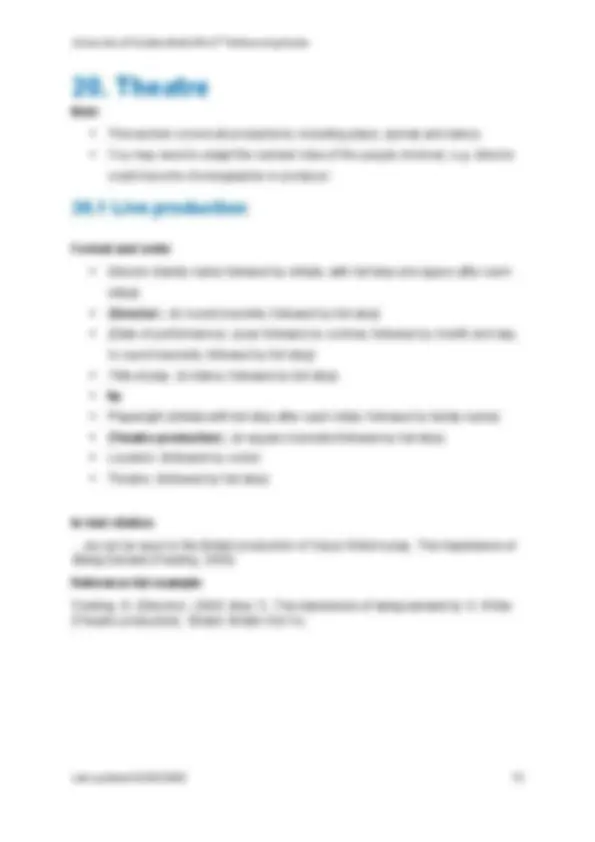
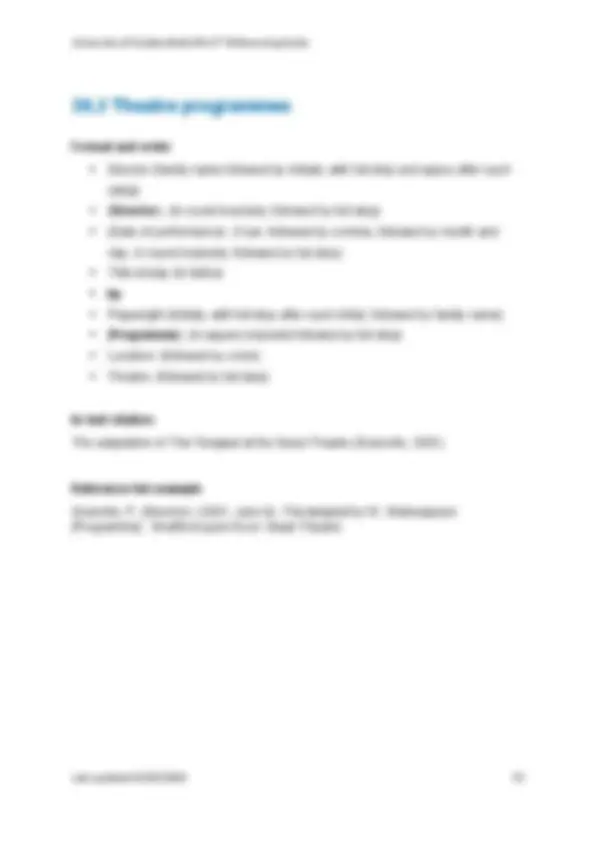
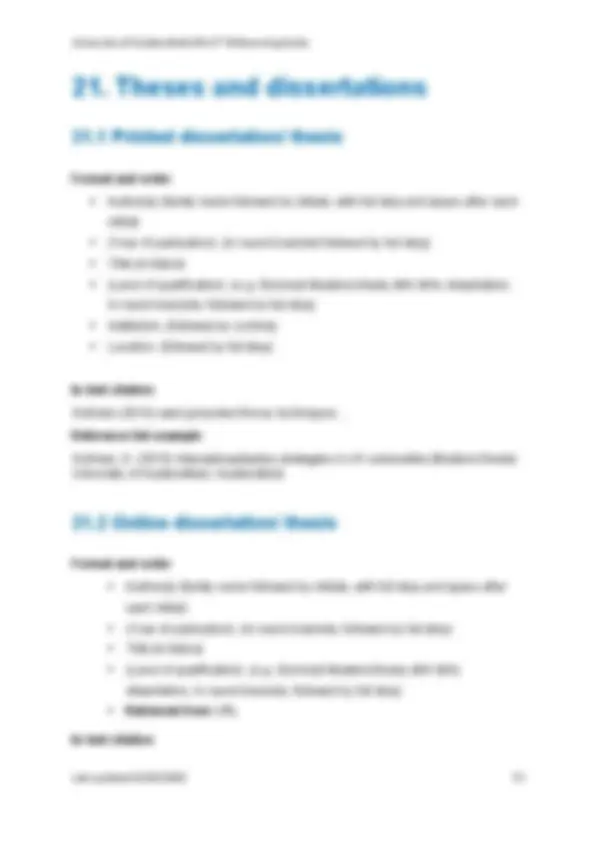

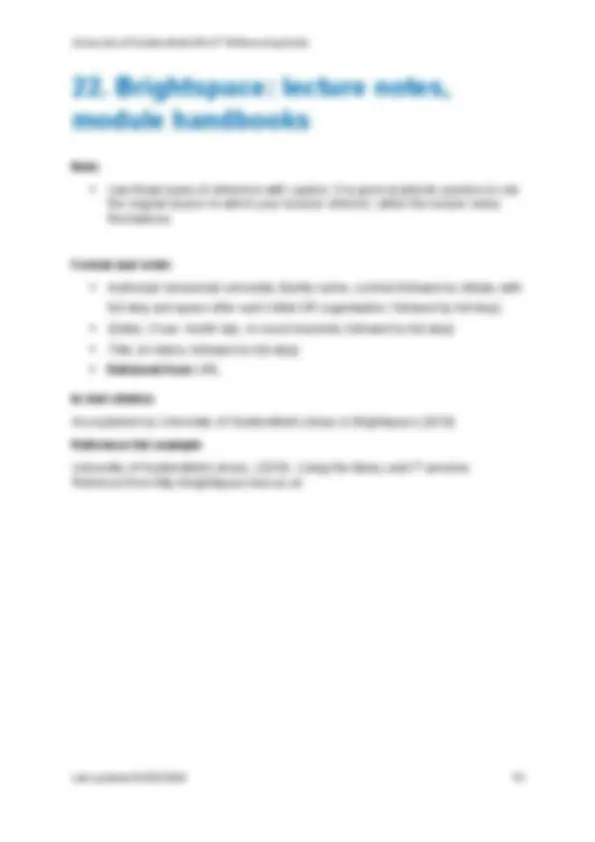
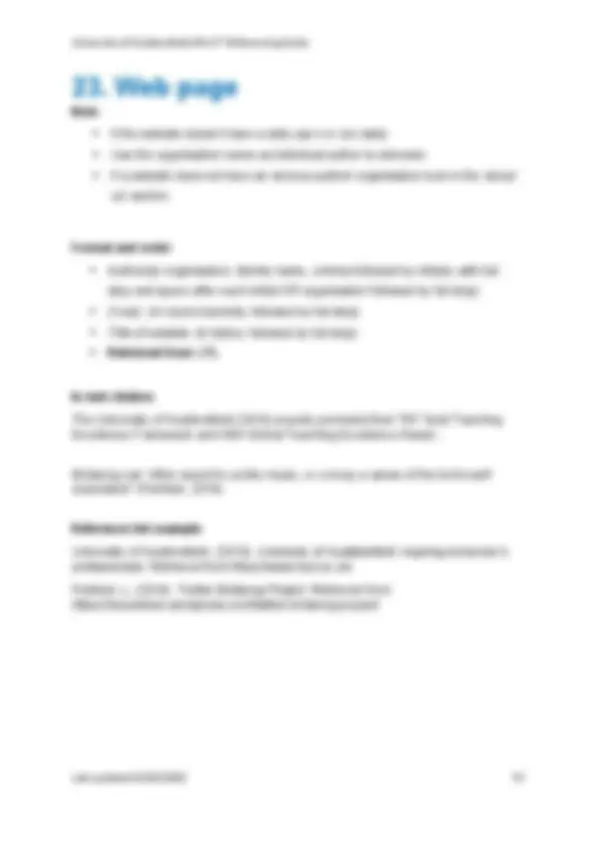
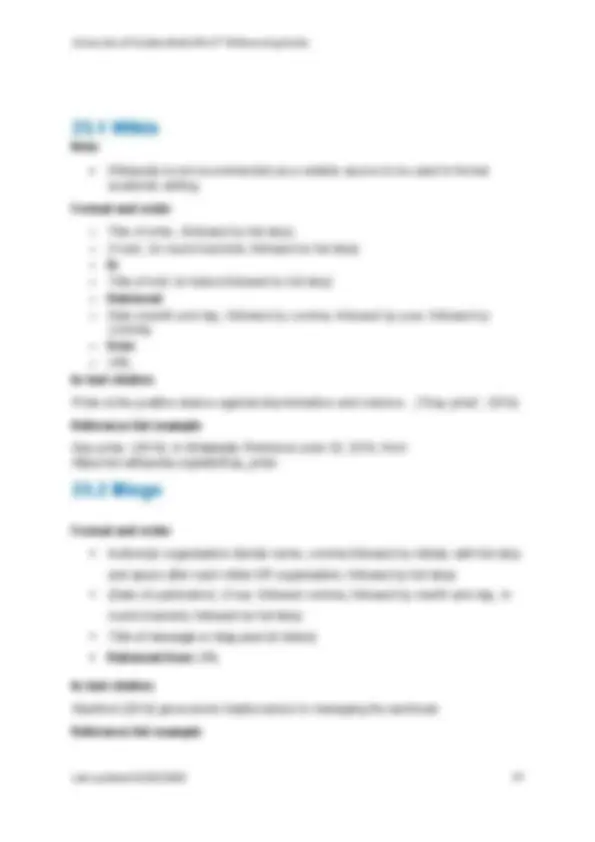



Study with the several resources on Docsity

Earn points by helping other students or get them with a premium plan


Prepare for your exams
Study with the several resources on Docsity

Earn points to download
Earn points by helping other students or get them with a premium plan
Community
Ask the community for help and clear up your study doubts
Discover the best universities in your country according to Docsity users
Free resources
Download our free guides on studying techniques, anxiety management strategies, and thesis advice from Docsity tutors
A detailed guide on the format and order for referencing various media types using the APA 6th referencing style. It covers artists, exhibition catalogues, books, conference papers, films, television programs, illustrations, journal articles, live performances, interviews, theses, and blogs.
Typology: Exams
1 / 79

This page cannot be seen from the preview
Don't miss anything!








































































You should acknowledge your source with a reference whenever you include:
mention of a theory, fact, argument or viewpoint attributable to a specific person.
statistics, examples or case studies.
illustrations or musical examples.
direct quotations/ paraphrase.
The principle of referencing is to answer these basic questions about your sources:
There will not be specific guidance for every single source type. Sometimes you may need to find the source that is the closest ‘fit’. This may mean using elements from two source types.
This APA blog is very useful for unusual reference types.
Who
When
What
Where
The principle of citation is to acknowledge the source in the body of the written work. It provides information for the reader to locate the source in the reference list.
Put the author’s family name, followed by the year of publication. Do not include the author’s initials in the citation. Include the author’s initials in the reference list. If referring to the title of a book, official publication, music album, film within your text, use italics and capital letters for each significant word, e.g. Harry Potter and the Philosopher’s Stone. For further rules on capitalisation and/ or punctuation, see the APA Blog.
Quoting
Quoting is directly copying the original source and putting the text in quotation marks. You need to acknowledge the original source and add the page numbers so the reader can find the specific text.
For quotations of under 40 words keep within the paragraph/ text and use double quotation marks.
For example:
It has been argued that there is a “direct correlation between using the library and academic achievement” (Brown, 2008, p. 52).
For quotations of 40 words or more, do not use quotation marks. Display the quotation in a separate and indented paragraph.
Who
When
Two or more citations by the same author
Name the author once. Cite the years of publication in date order. Separate each citation with a comma. For example:
Research shows that efficient use of library resources improves academic achievement (Brown, 2008, 2009).
If you are using two different sources from the same author and date you can distinguish between them by adding a letter a, b etc. For example:
(Jones, 2019a) (Jones, 2019b) In the reference list they are listed in alphabetical order using the title of the resource.
This is where you refer to a source that you have not read but that has been cited by another source that you have read.
It is always better to read and cite the original source. “Use secondary sources sparingly, for instance, when the original work is out of print, unavailable through usual sources, or not available in English” (American Psychological Association, 2009, p. 178).
Cite the author of the original work in the text. Follow it with the citation for the secondary source. Only include the secondary source in the reference list.
For example:
Smith (as cited in Brown, 2008, p. 22) argued that…
Brown would be in the reference list not Smith.
Equally, “the formula is complicated” (Khan & Poppins as cited in Sizemore, 2011, p. 143)…
Sizemore would be in the reference list not Khan and Poppins.
Number of Authors
First in-text citation Subsequent in-text citations One author According to Ramsden (2019), when adults return to education... OR …(Ramsden, 2019).
As first in-text citation
Two authors Ramsden and Jones (2019) recommend... OR …(Ramsden & Jones, 2019).
As first in-text citation
Three, four, or five authors
Ramsden, Jones, and Smith (2019) explain that... OR …(Ramsden, Jones, & Smith, 2019).
According to Ramsden et al. (2019)…
OR
…(Ramsden et al., 2019). Six or more authors
Ramsden et al. (2019) describe… OR …(Ramsden et al., 2019).
As first in-text citation
Organisation The National Health Service (NHS, 2019) reported… OR …(National Health Service [NHS],
The NHS (2019) reported …
OR … (NHS, 2019).
No author - whole book/ report
Cite the title The Ofsted report (2019) from the school stated that… …(Ofsted, 2019).
As first in-text citation
Anonymous Cite in text the word Anonymous followed by a comma and the date. Anonymous (2019)… OR …(Anonymous, 2019).
As first in-text citation
Krisztian, G., & Schlempp-Ülker, N. (2006). Visualizing ideas: From scribbles to storyboards. London: Thames and Hudson.
Matheus, C. C., & Quinn, E. (2017). Gender based occupational stereotypes: New behaviors, old attitudes. In IEEE Women in Engineering (WIE) Forum USA East , 1-6. Retrieved from https://ieeexplore-ieeeorg.libaccess.hud.ac.uk/document/8285610/
Ness, P. (2018). The knife of never letting go. London: Walker Books.
You need to use the author’s family name followed by initials, e.g. Kirsty Carver becomes Carver, K. (note the full stop after the abbreviated first name) For organisations or companies, use the full title followed by a full stop, e.g. University of Huddersfield. Use the “&” (ampersand) to join together two or more authors. When your source has multiple authors, refer to the table below:
Number of authors Example of names at the start of reference Up to seven authors list them all Ramsden, B, J., Jones, J., Smith, K., Sharman, A., Carver, K., Briggs, J., & Wilson, M. (2019). Eight or more authors write the first six then write ‘…’ and add last author
Ramsden, B. J., Jones, J., Smith, K., Sharman, A., Carver, K., Briggs, J., …George, Y. (2019). Organisation National Health Service. (2019).
Digital object identifier (DOI)
The digital object identifier (DOI) is used when referencing using APA 6 th^ style. It is a unique and permanent number used to identify electronic documents that stay the same even if there is a change of publisher or web address. The DOI begins with a 10 and contains a prefix and a suffix separated by a slash, e.g. doi:10.1000/xyz123.
If the DOI turns into a hyperlink when you type it (e.g. becomes blue and underlined), remove the hyperlink by right clicking on it.
If any of the information is not available, the reference needs to be adapted. See the table below for guidance:
Missing reference information
What should I do? In-text Example reference
Author is missing Substitute title for author then provide date and source. Italicise the title of a book, report or government publication. When using a website without an author, you will need to use the organisation.
This image creates a feeling of happiness ( “Sunflower” , 2019 ).
Sunflower [Image]. (2019). Retrieved from https://publicdomainpictures.net
Date is missing Provide author, substitute n.d. for no date, and then give title and source.
(Smith, n.d.). Smith, S. (n.d.). Sunflower. Retrieved from https://publicdomainpictures.net
Title is missing Provide author and date, describe document inside square brackets, and then give source.
(Smith, 2019).
Smith, S. (2019). [Image of sunflower]. Retrieved from https://publicdomainpictures.net
Author and title are both missing
Try to find the details. Consider using another source.
Official APA 6 th^ guidance
American Psychological Association. (2009). Publication manual of the American Psychological Association (6th ed.). Washington, DC: American Psychological Association. Available in University of Huddersfield Library at 808.06615 AME American Psychological Association. (2018). APA blog. Retrieved from http://blog.apastyle.org/apastyle/
Help within the University of Huddersfield Contact your Subject Librarians: email library@hud.ac.uk or there are further contact details Contact your Academic Skills Tutors in your department. Look at the Library Glossary to understand the definitions of words used in citation and referencing.
Format and order
Artist(s) (family name, comma followed by initials, with full stop and space after each initial) (Year of production). (in round brackets, followed by full stop) Title of work (in italics) [Description of artwork format]. (in square brackets followed by full stop) The city where the museum/ artwork is located: (followed by colon) Museum or collection name. (followed by full stop)
In-text citation
It was a thought provoking exhibition (Guerrilla Girls, 1989).
Reference list
Guerrilla Girls. (1989). Do women have to be naked to get into the Met Museum? [Screenprint on paper]. London: Tate.
Format and order
Artist(s) (family name, comma followed by initials, with full stop and space after each initial) (Year of production). (in round brackets, followed by full stop) Title of work (in italics) [Description of artwork format]. (in square brackets, followed by full stop) Retrieved from followed by URL
In-text citation
…and her work was unique (Kusama, 2000).
Note
(Ed.) abbreviation for editor (in round brackets, followed by a full stop). (Eds.) abbreviation for more than one editor (in round brackets, followed by a full stop). List author/ editors names in the order they appear on the title page of the book. (ed.) abbreviation for edition (in round brackets, followed by a full stop). Only include edition if it the second or subsequent edition, i.e. do not mention if it is the first edition of a book. Publication details are generally found towards the start of the book. In art books, these are often at the end of the book. Ignore the reprint dates. If there is a choice of cities for the place of publication, you only need to include the location in the UK. If it is a US city, also include the state abbreviation, e.g. Baltimore, MD. The full list of state abbreviations is available. Do not use the word Ltd. after the name of the publisher.
Format and order
Authors (family name, comma followed by initials, with full stop and space after each initial) (Year of publication). (in round brackets, followed by a full stop) Title. (in italics, followed by full stop unless including edition) (Edition number ed. ). (in round brackets, followed by full stop) Place of publication: (followed by a colon) Publisher. (followed by a full stop)
In-text citation
As it says in To Kill a Mockingbird, “You never really understand a person until you consider things from his point of view until you climb in his skin and walk around in it” (Lee, 2003, p. 33).
Some useful techniques for improving your sketching, “Think big, but keep it simple” (Krisztian & Schlempp-Ülker, 2006, p. 86).
Reference list
Lee, H. (2003). To kill a mockingbird. London: Heinemann.
Krisztian, G., & Schlempp-Ülker, N. (2006). Visualizing ideas: From scribbles to storyboards. London: Thames and Hudson.
Note
The first in-text citation for a work with 3-5 authors includes all the names of the author(s). Subsequent citations include only the first author followed by et al. and the year.
If a work has 6 or more authors, include only the first author followed by et al. and the year, from the first time it is cited.
Format and order
Authors (family name, comma followed by initials with full stop and space after each initial) (Year of publication). (in round brackets, followed by a full stop) Title. (in italics, followed by full stop unless including edition) (Edition number ed. ) (in round brackets, followed by full stop) Place of publication: (followed by a colon) Publisher. (followed by a full stop)
In-text citation
The chapter on sedimentation considers “forces acting on an isolated particle moving relative to a fluid” (Richardson, Harker, & Backhurst, 2002, p. 237).
Any subsequent citation would appear as (Richardson et al., 2002)